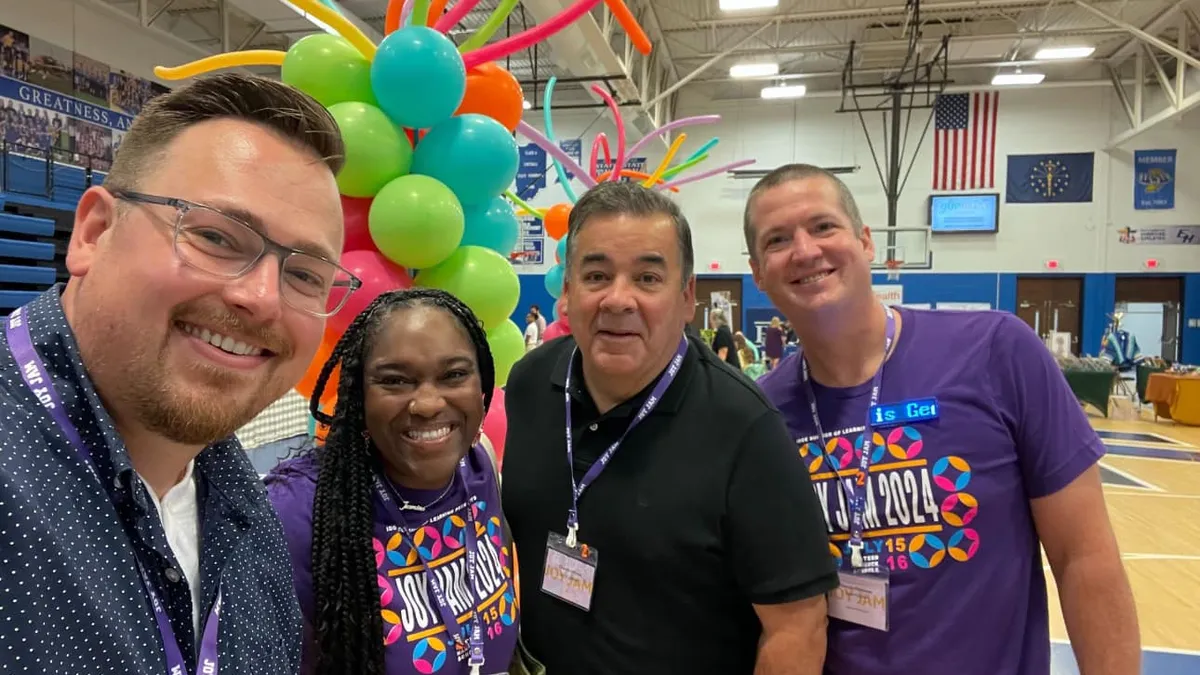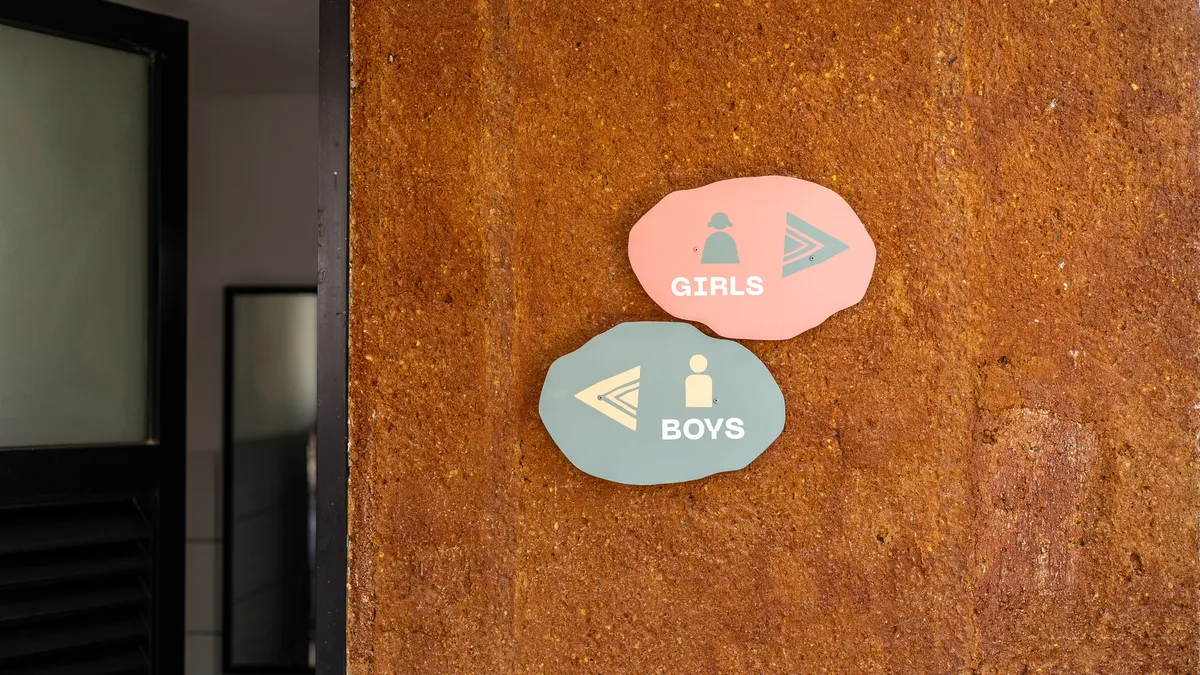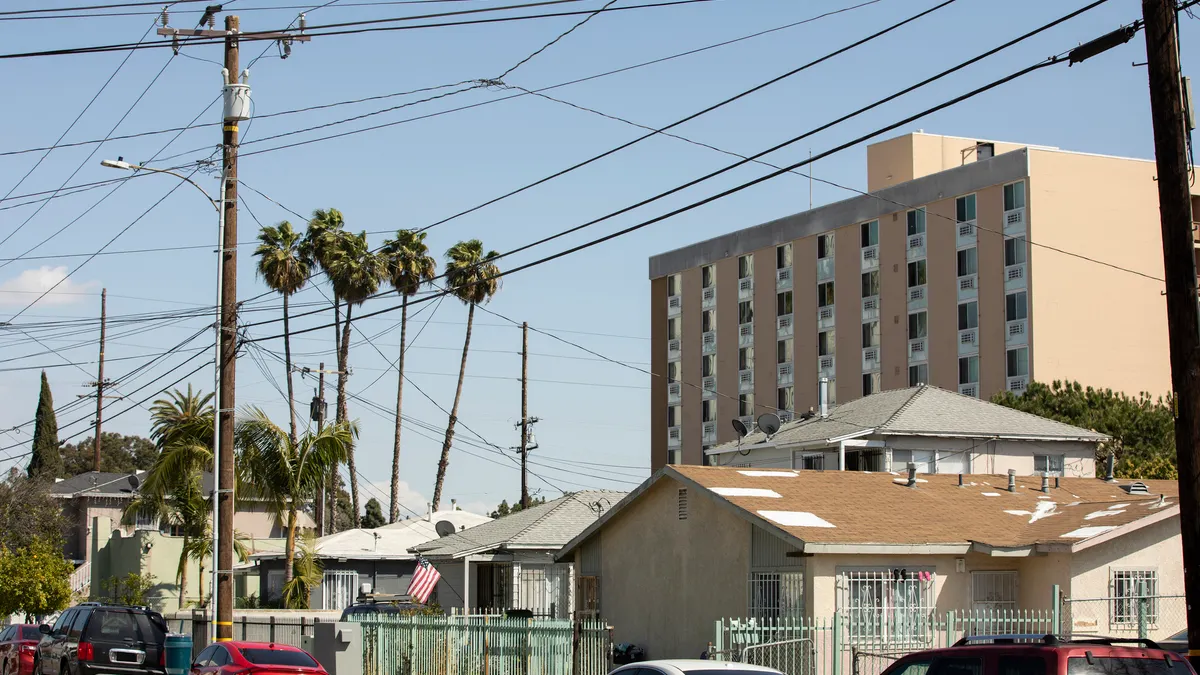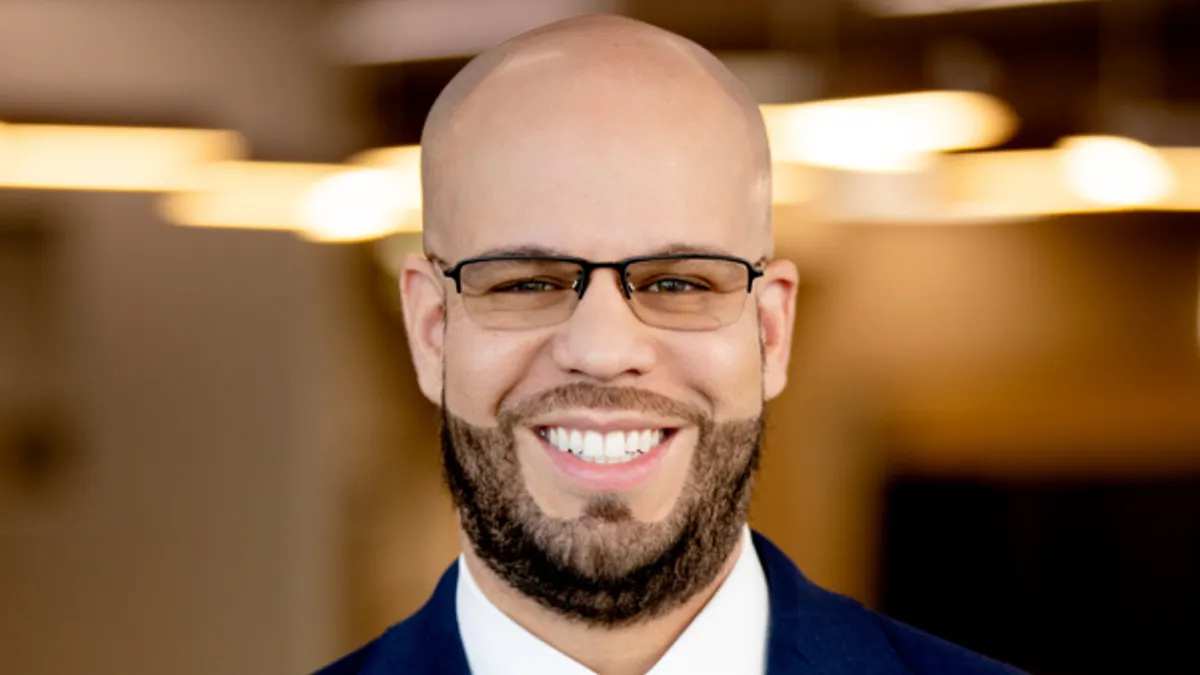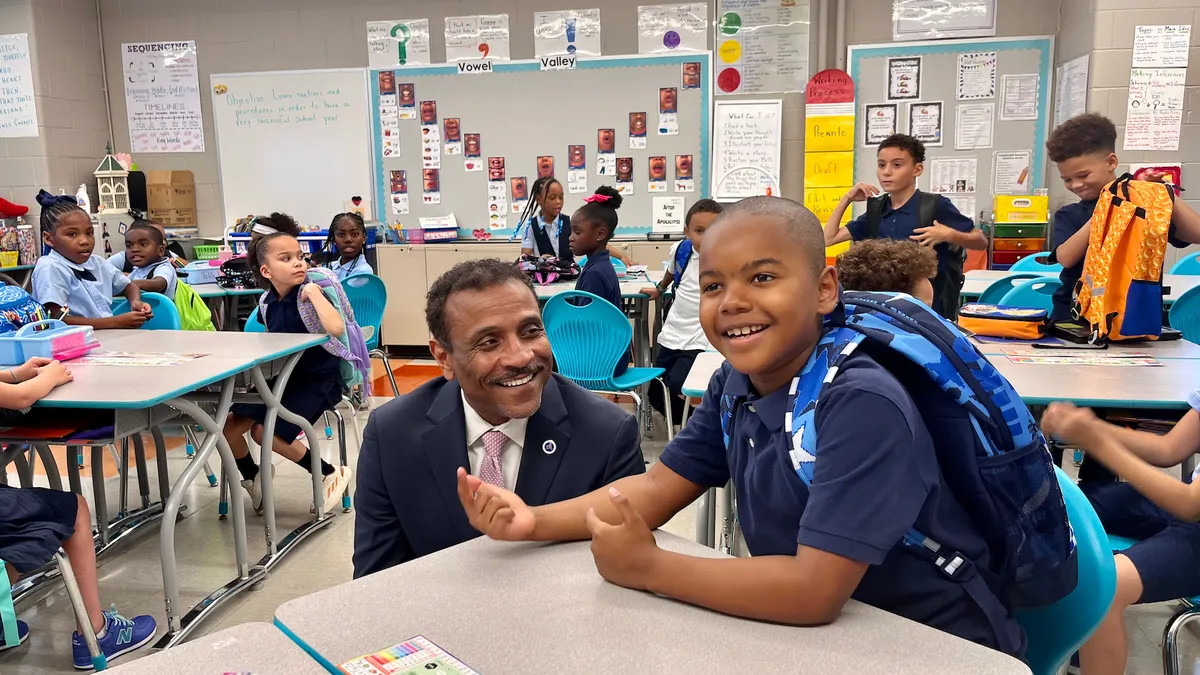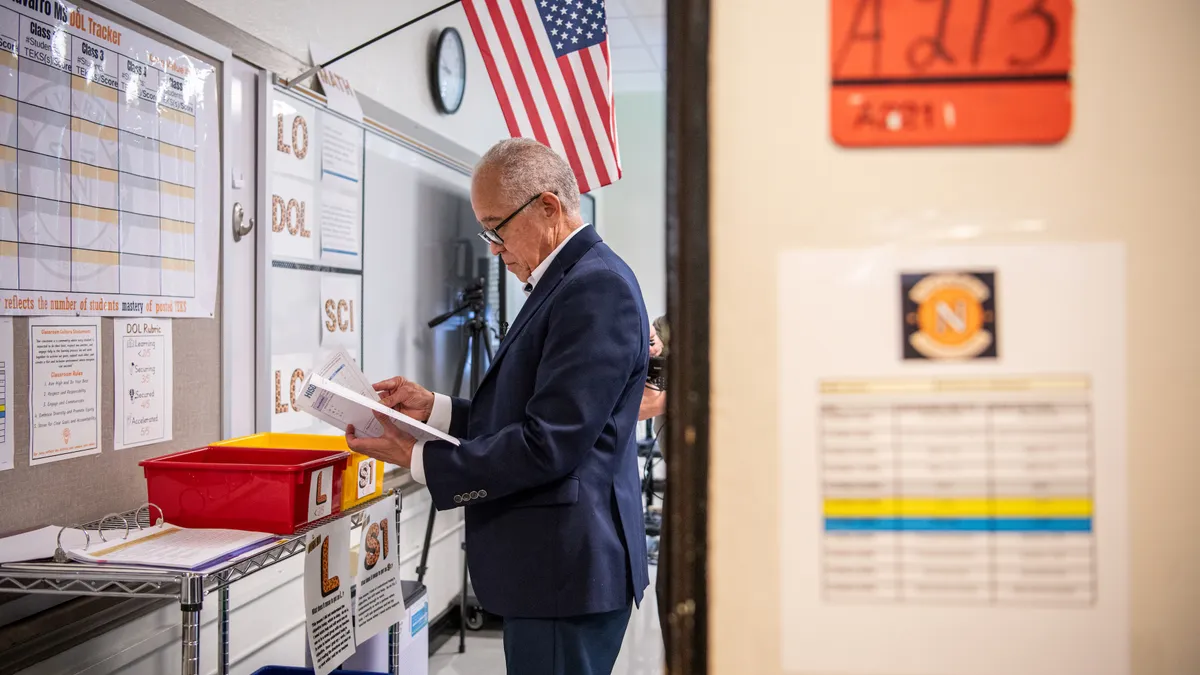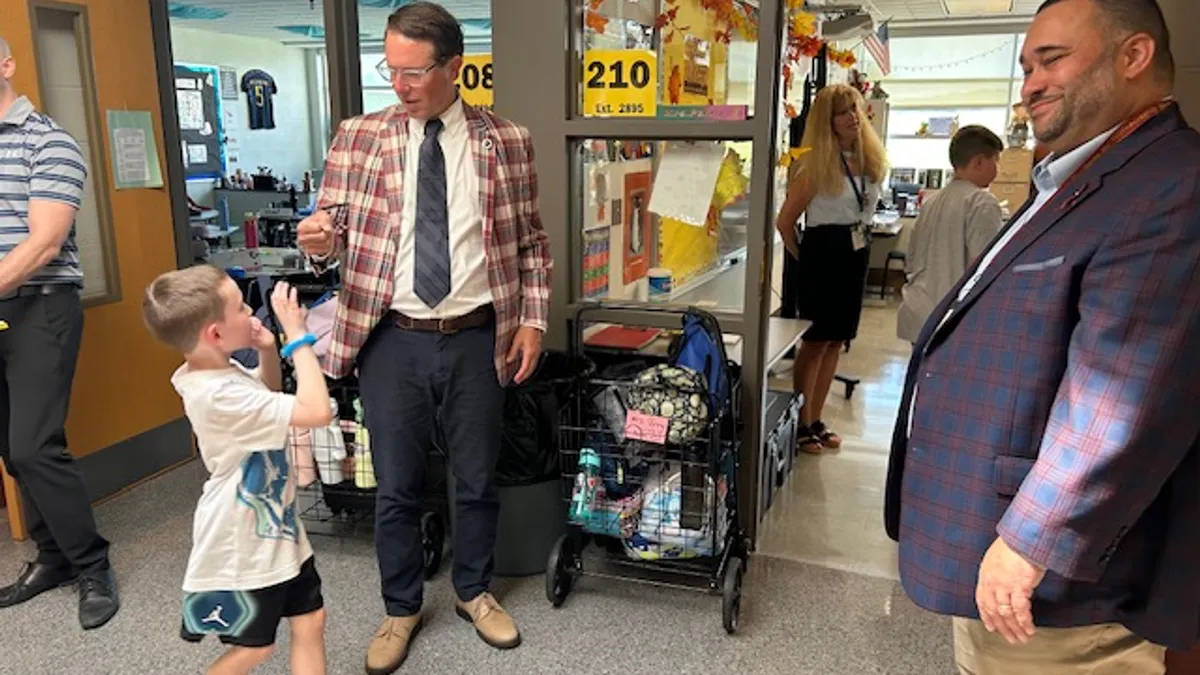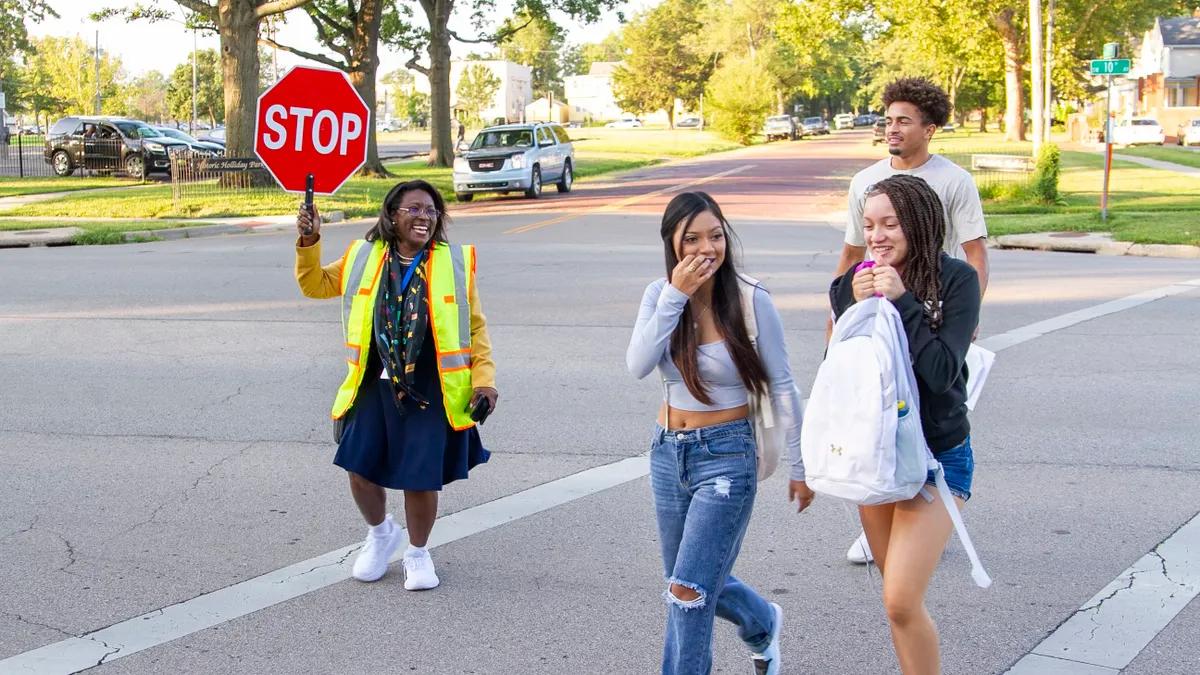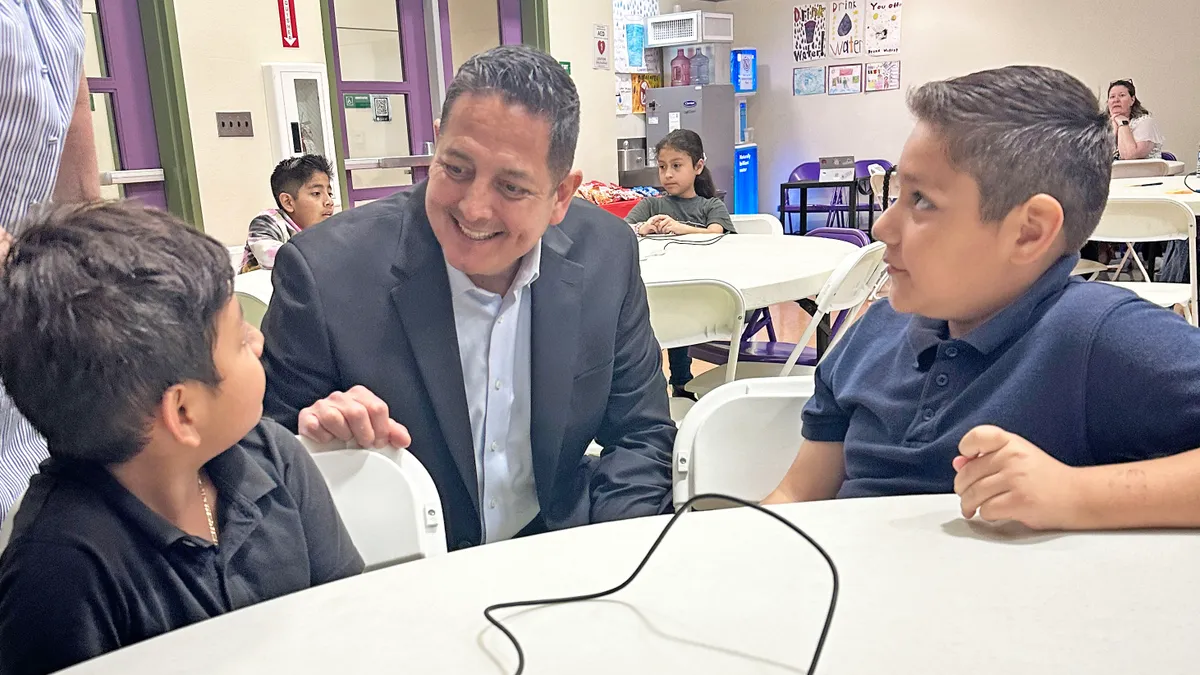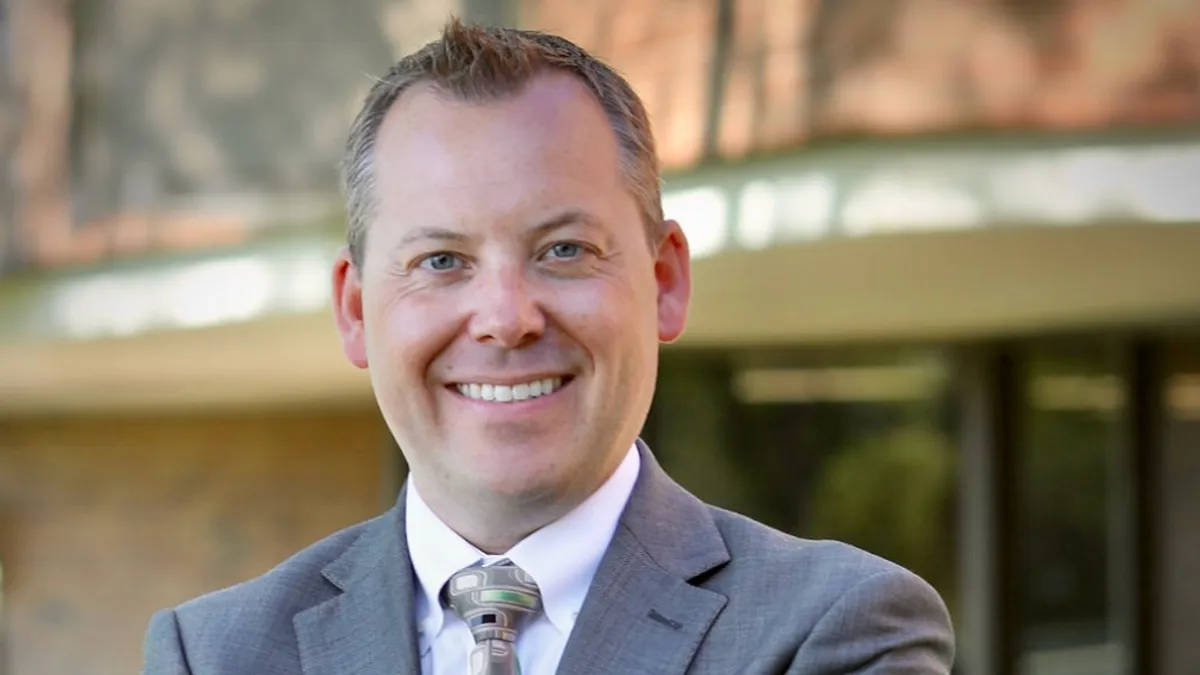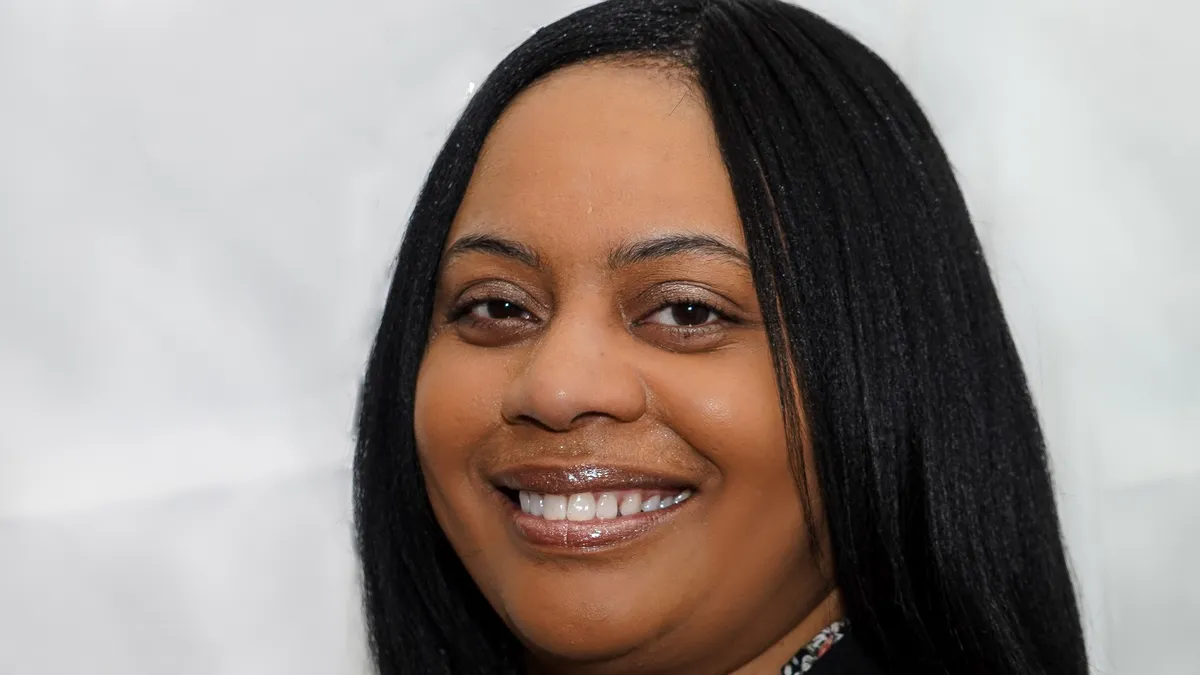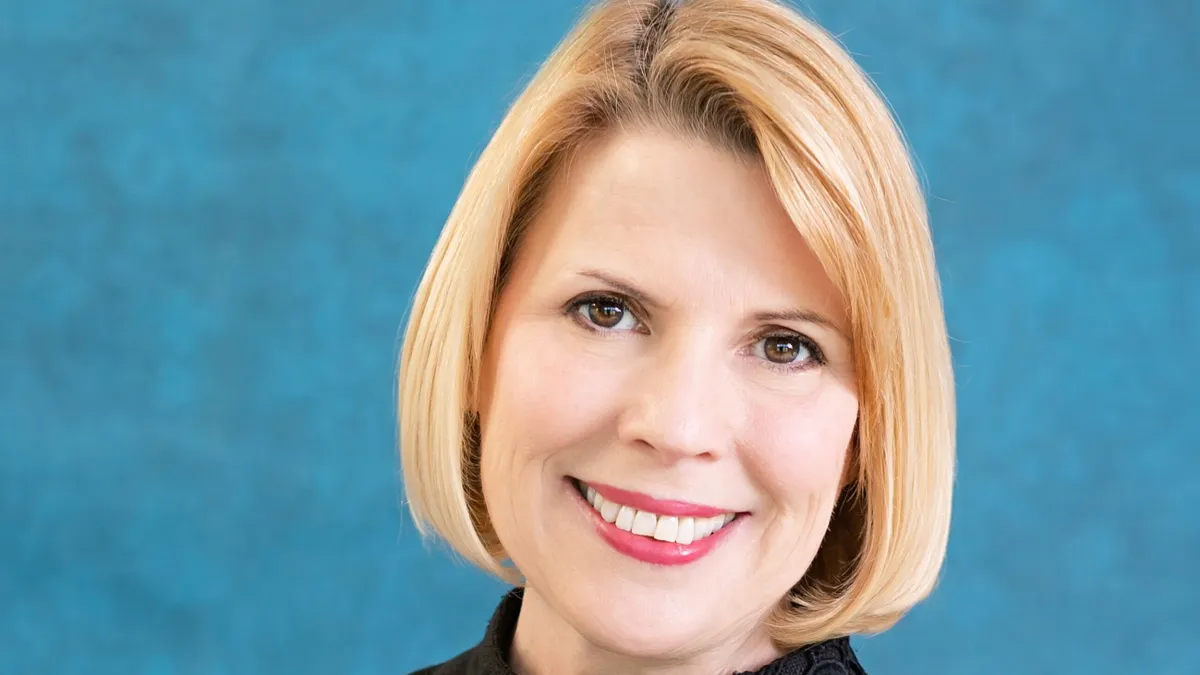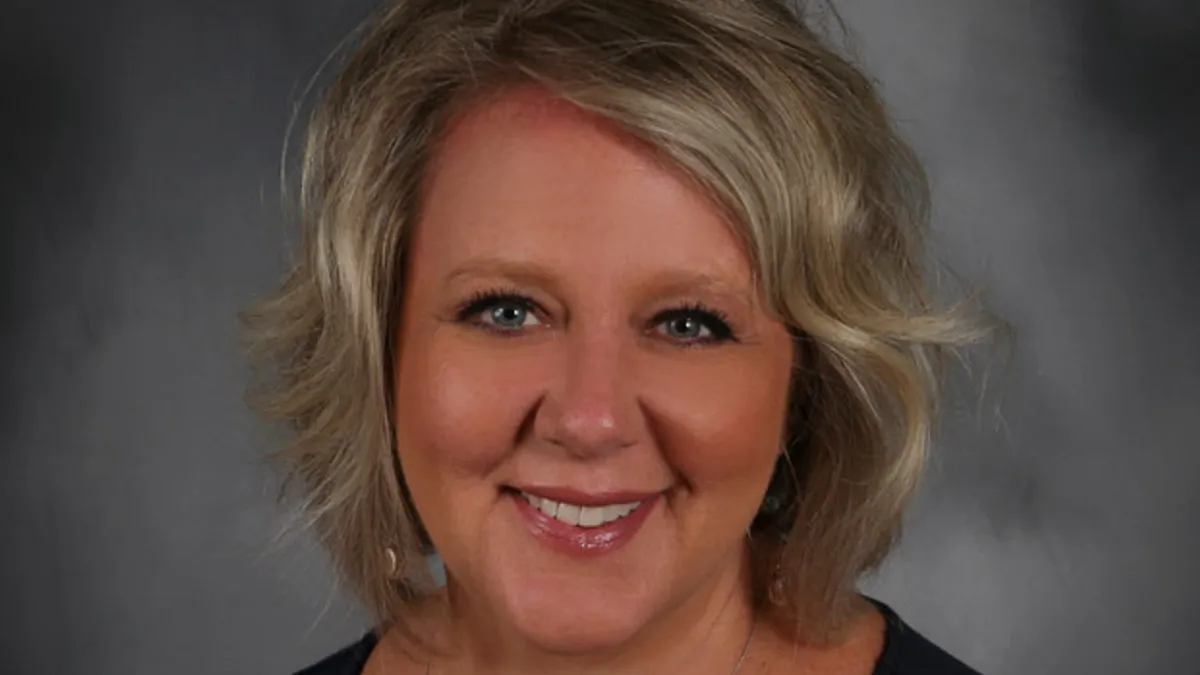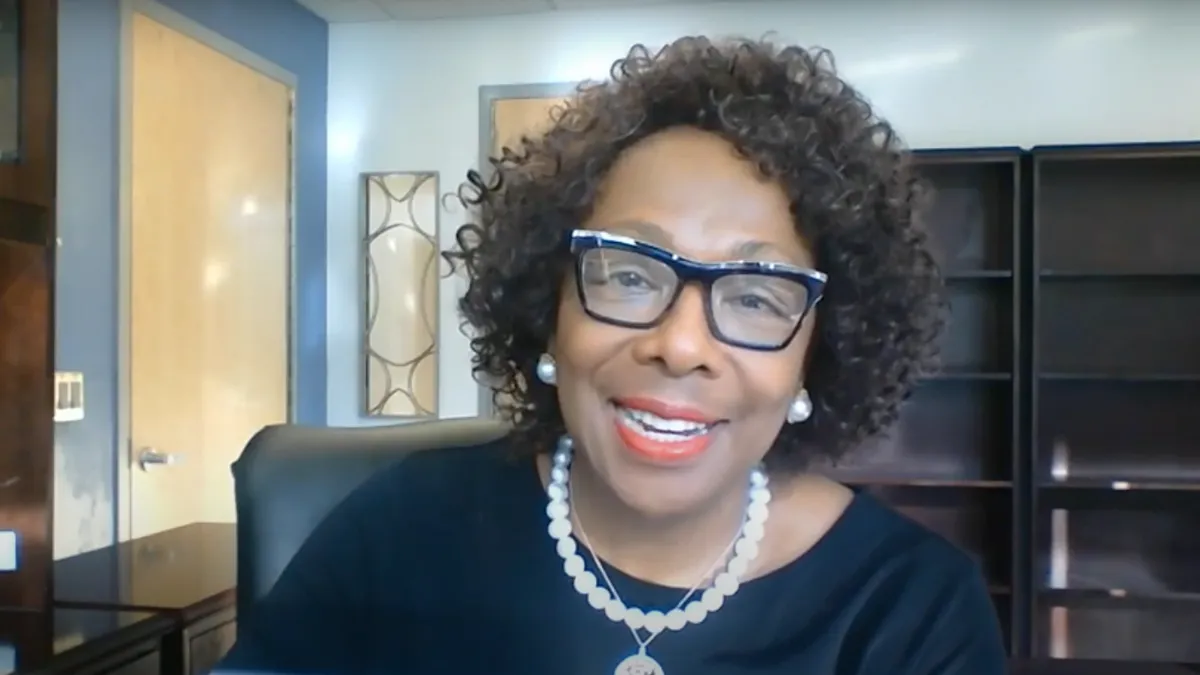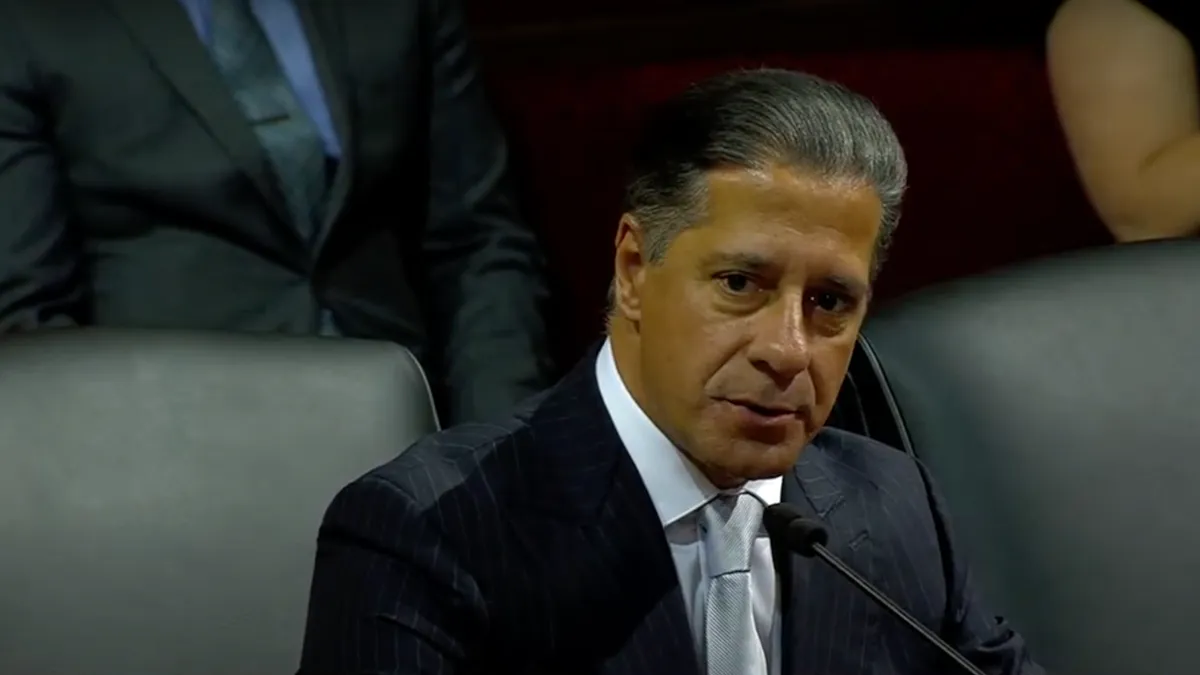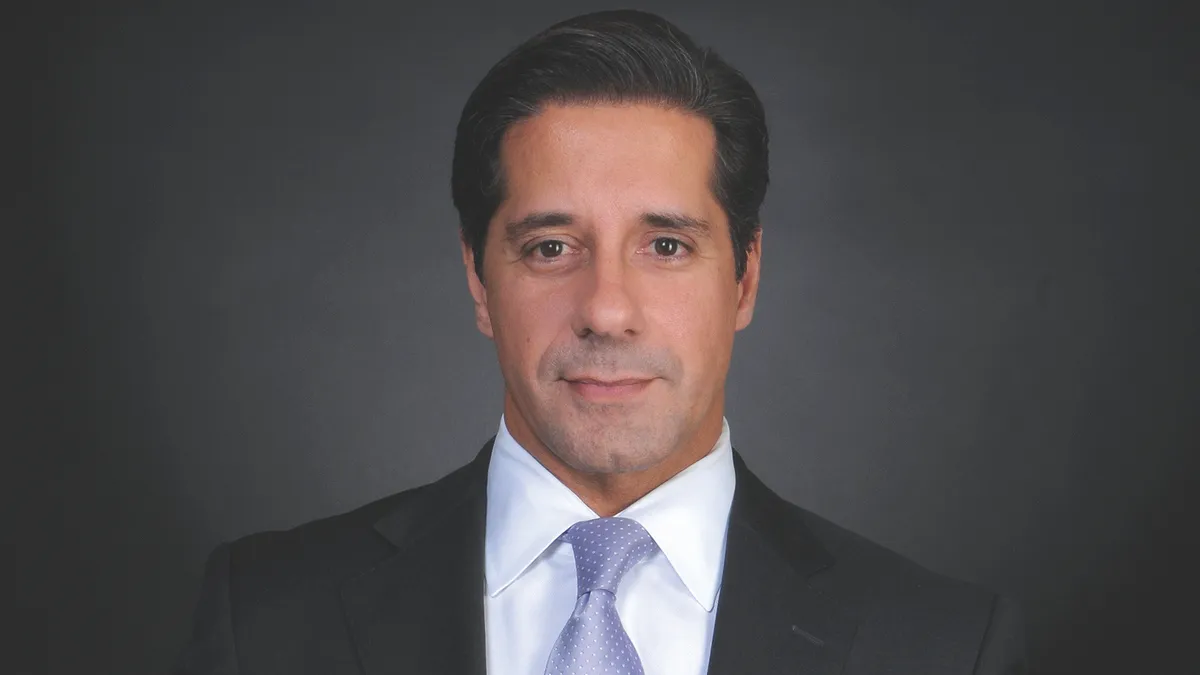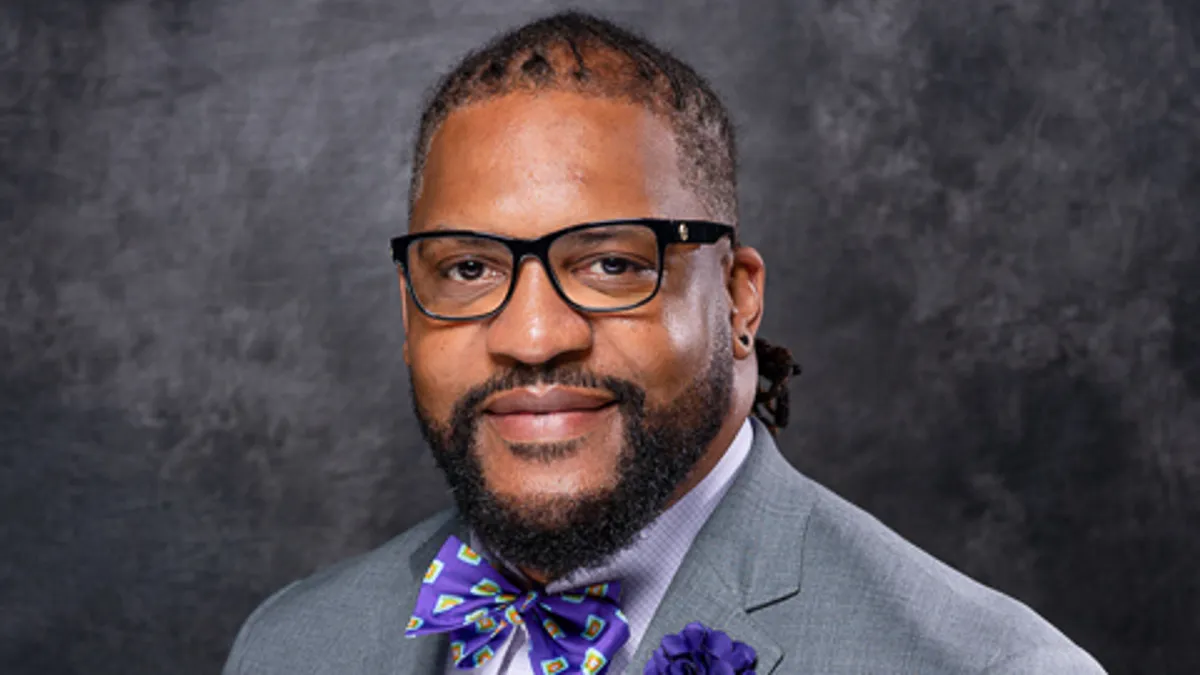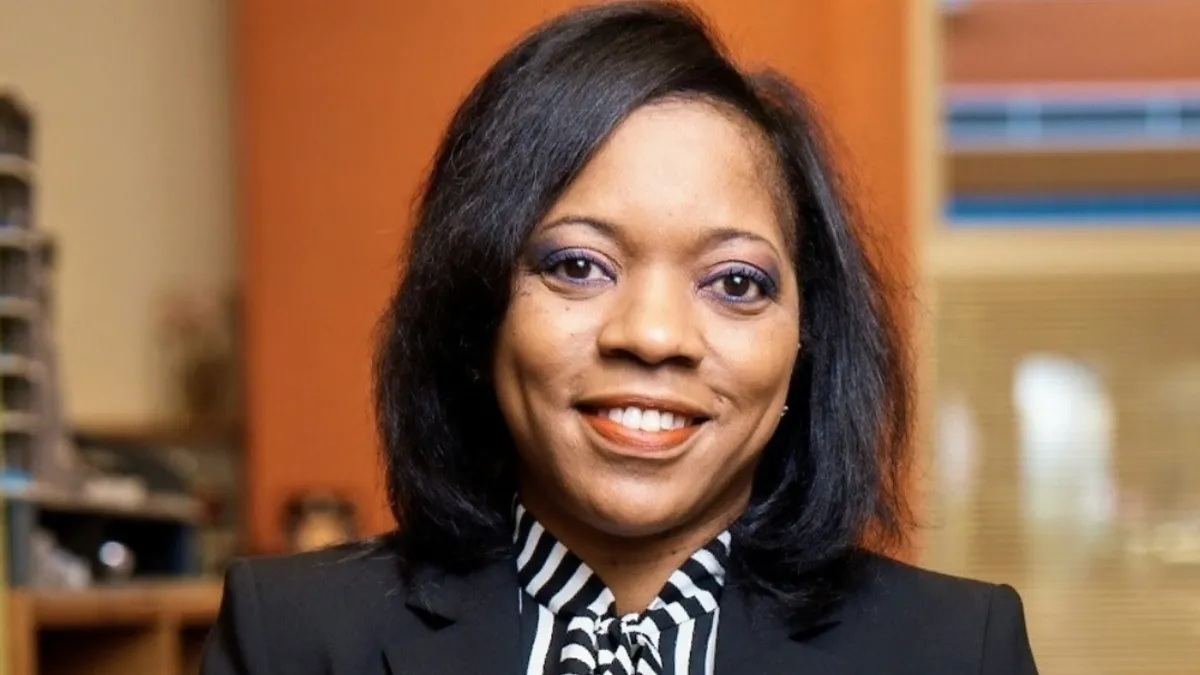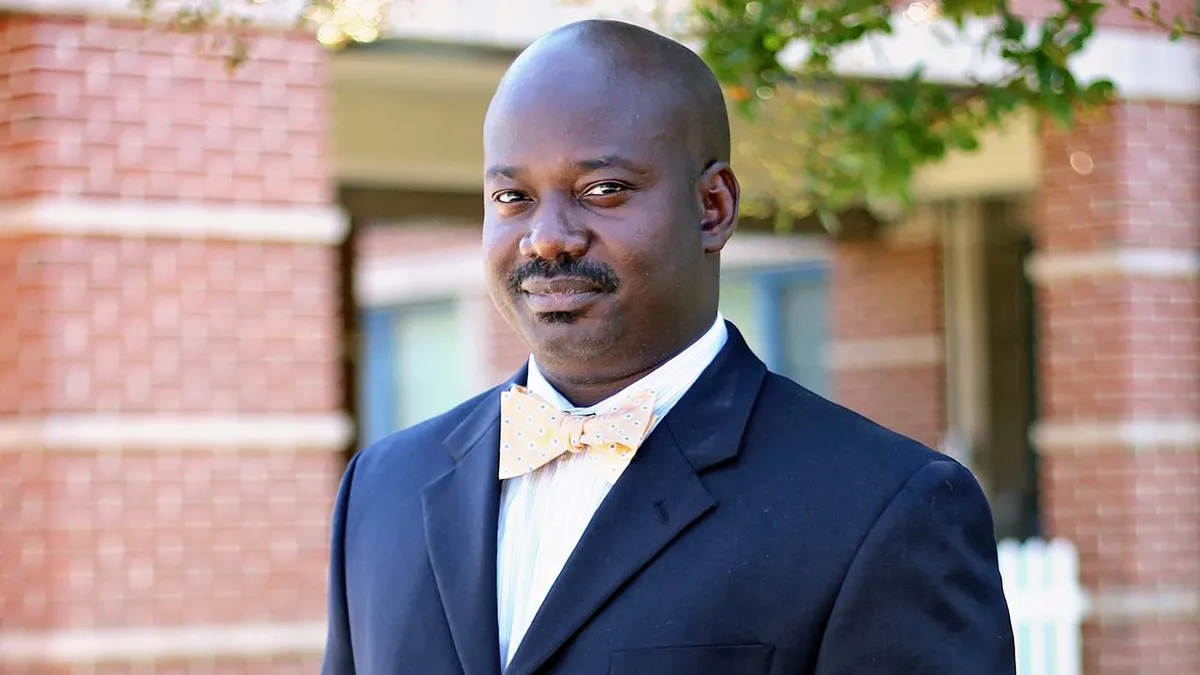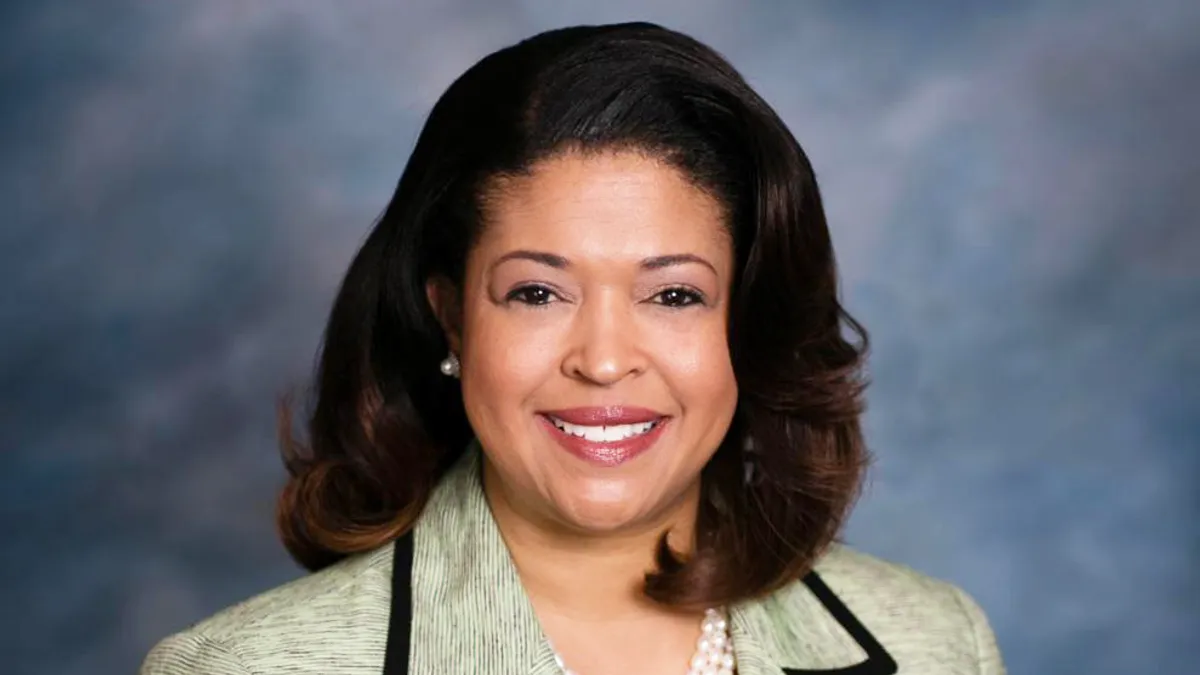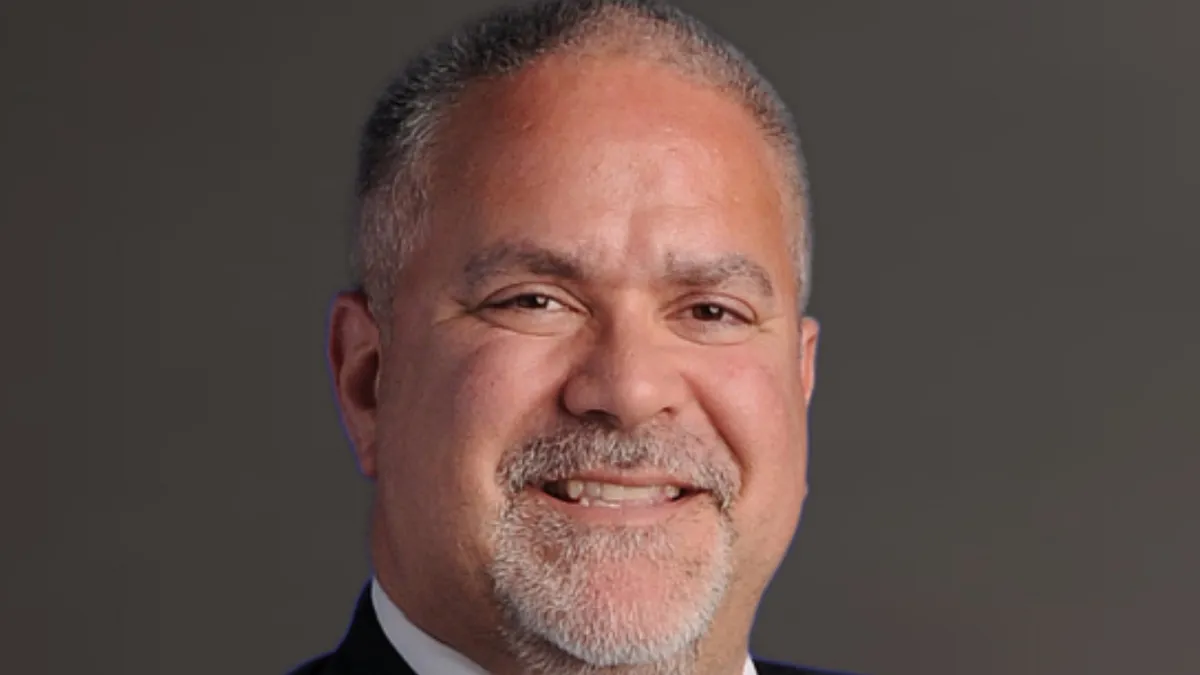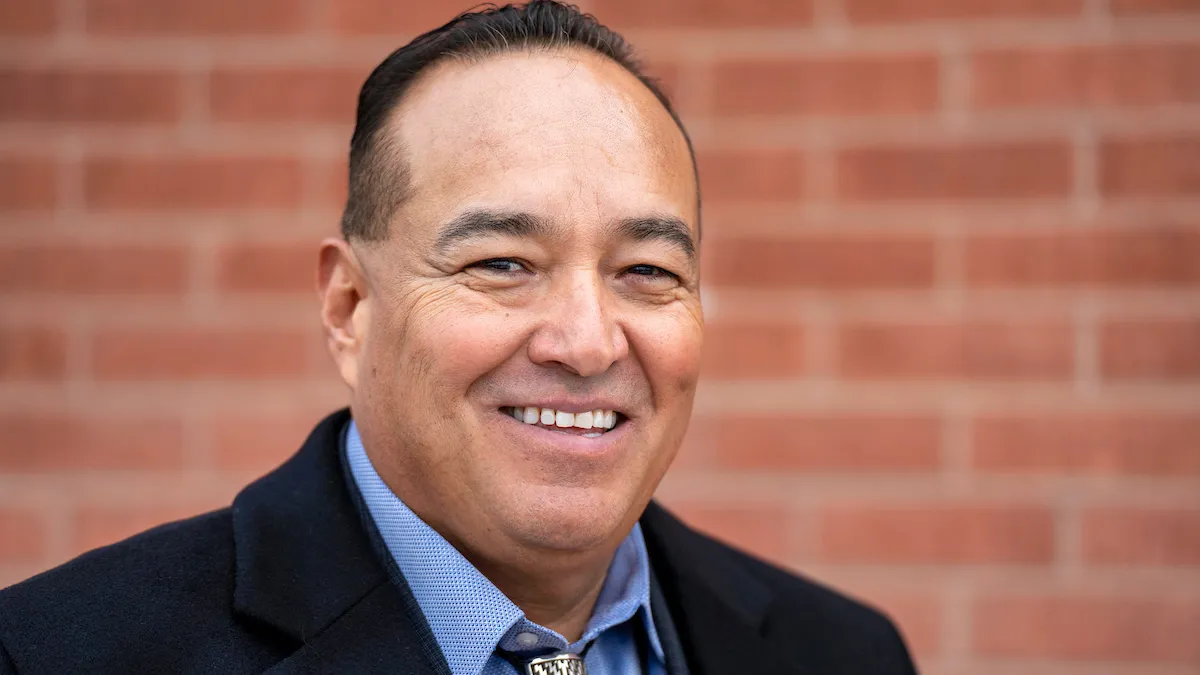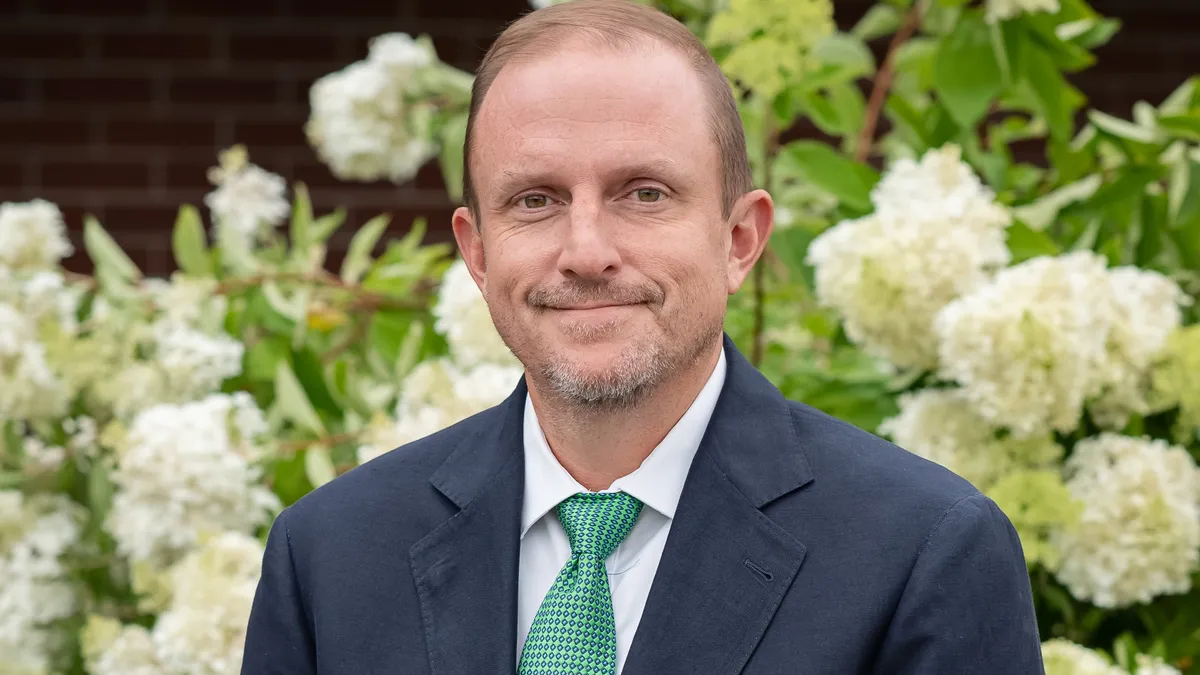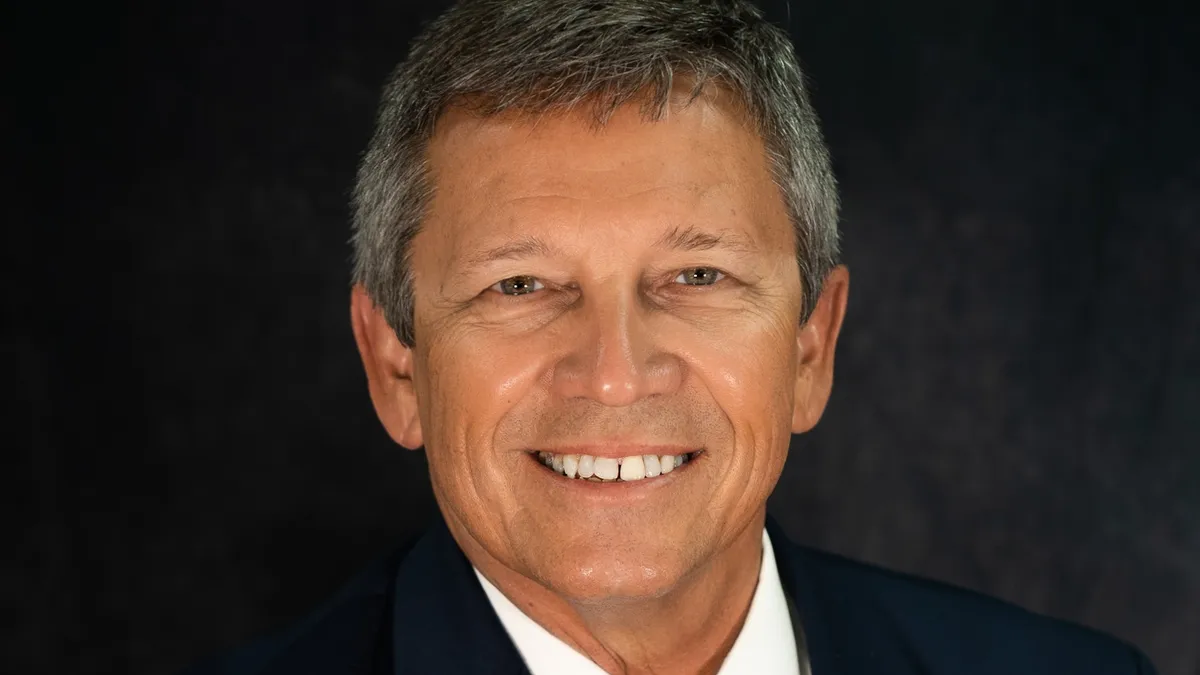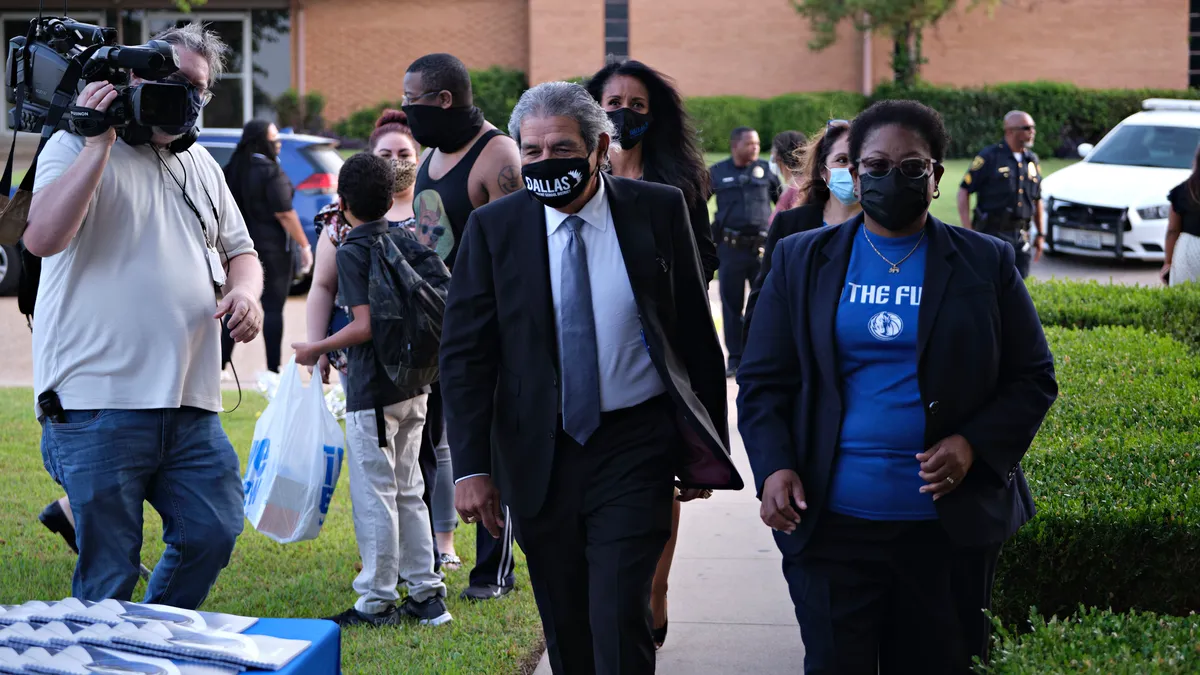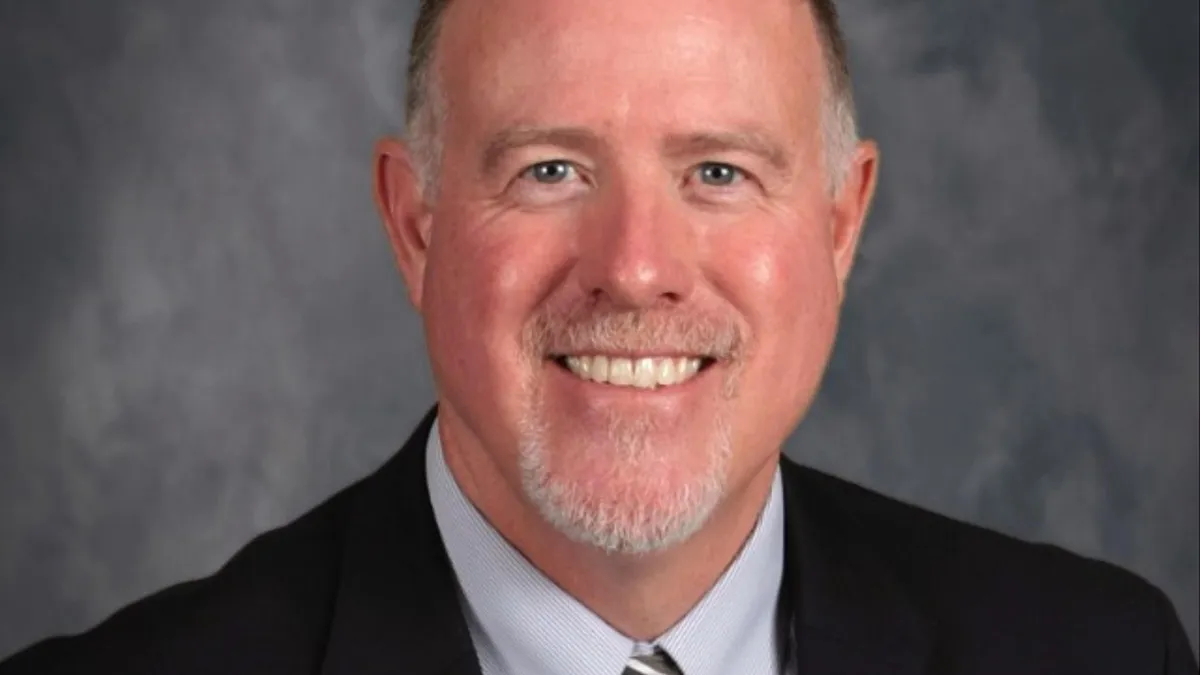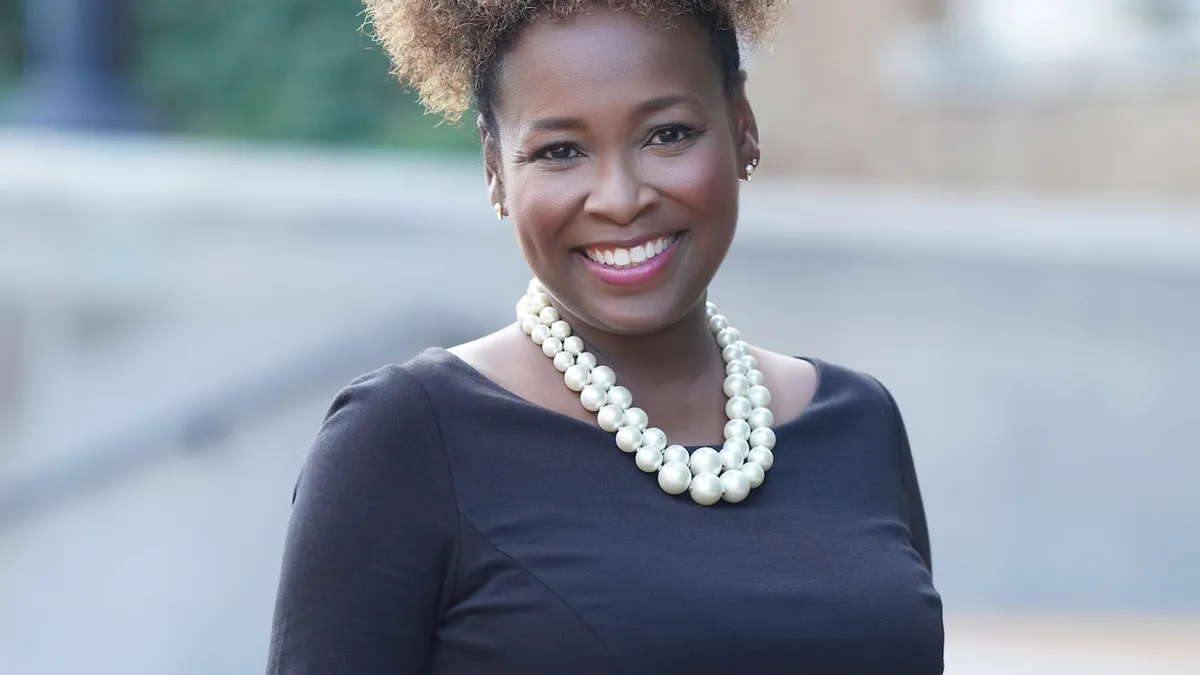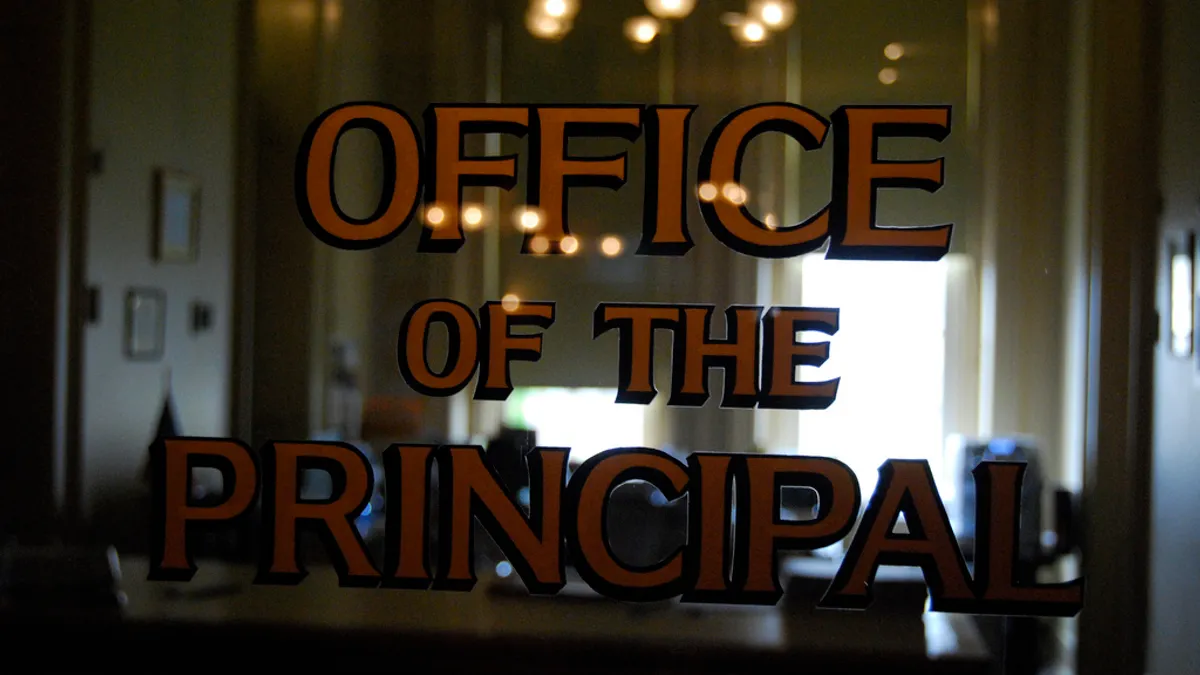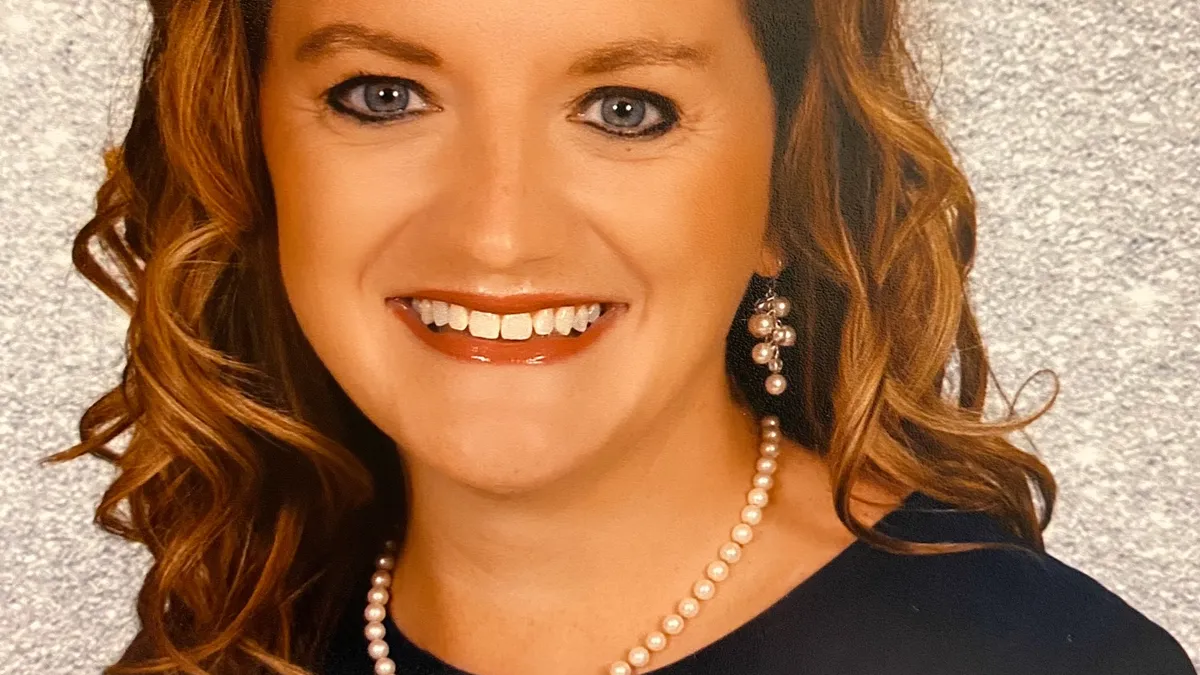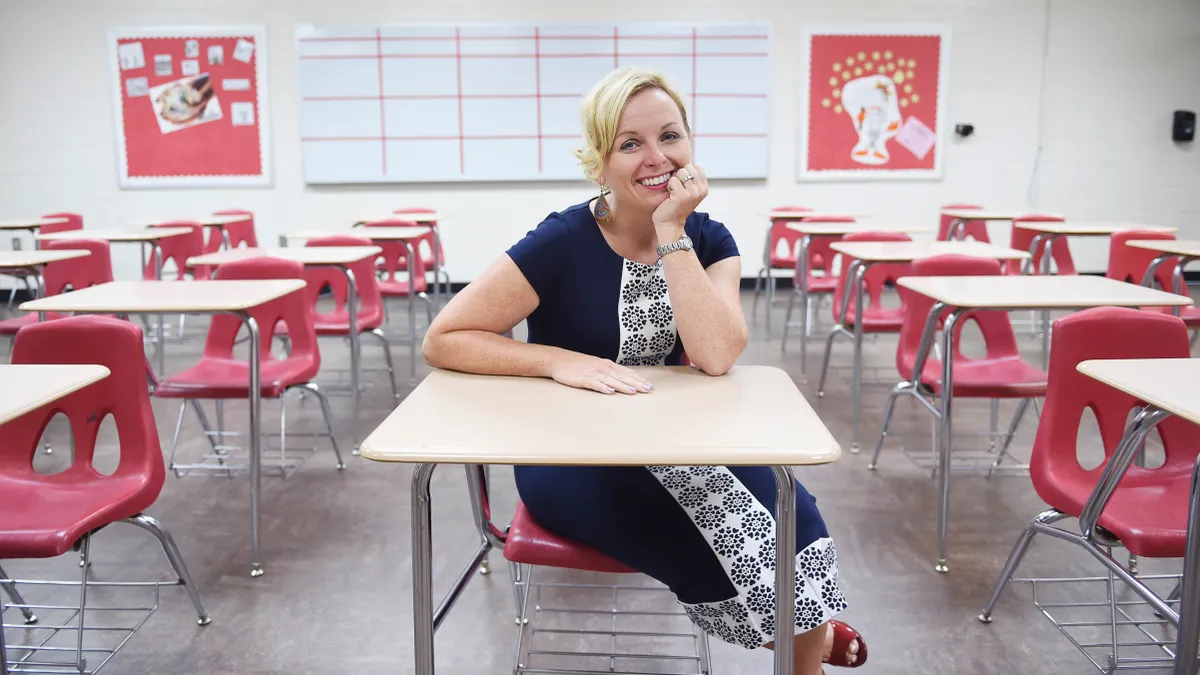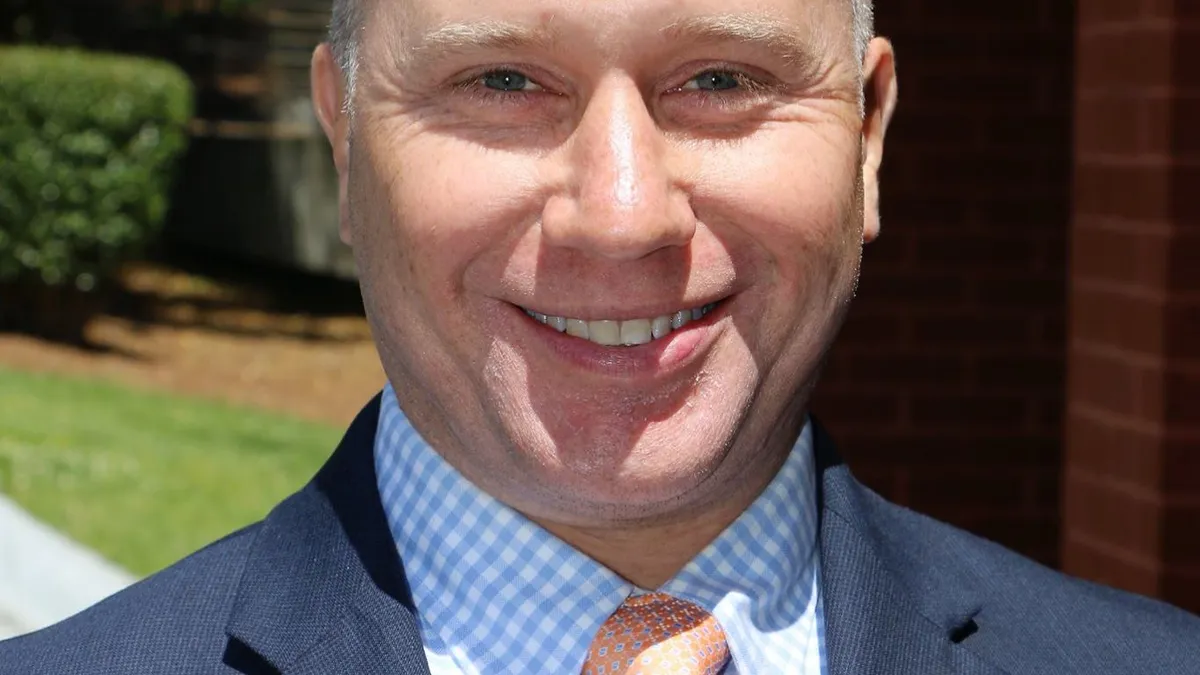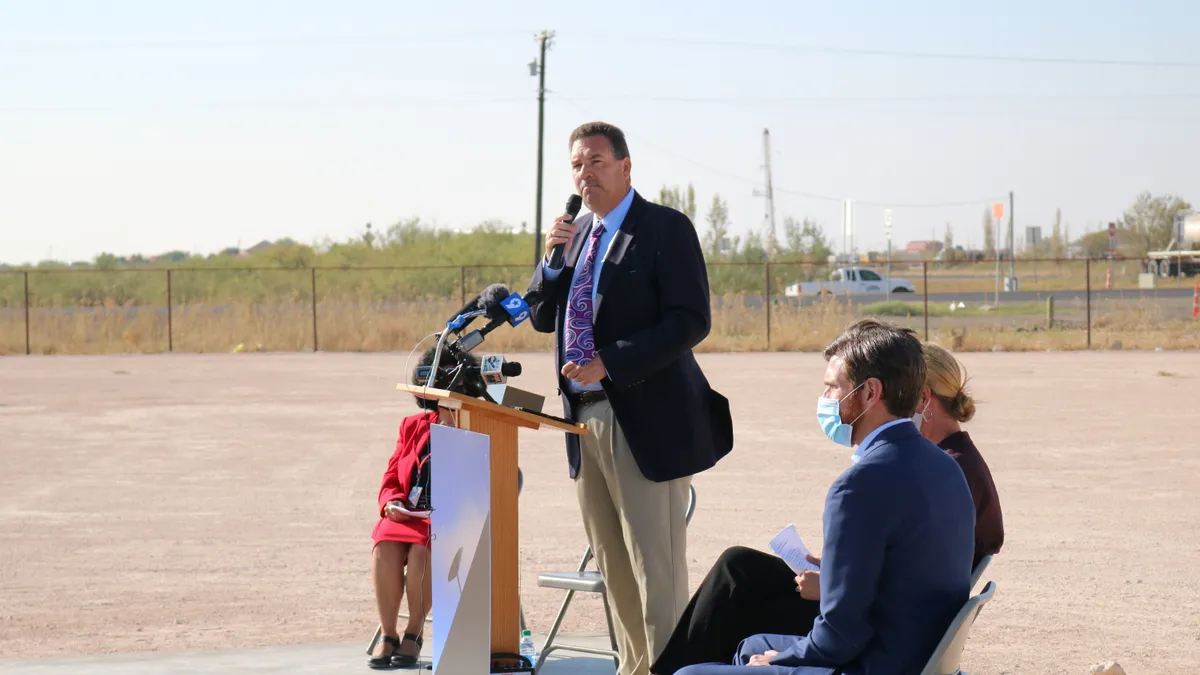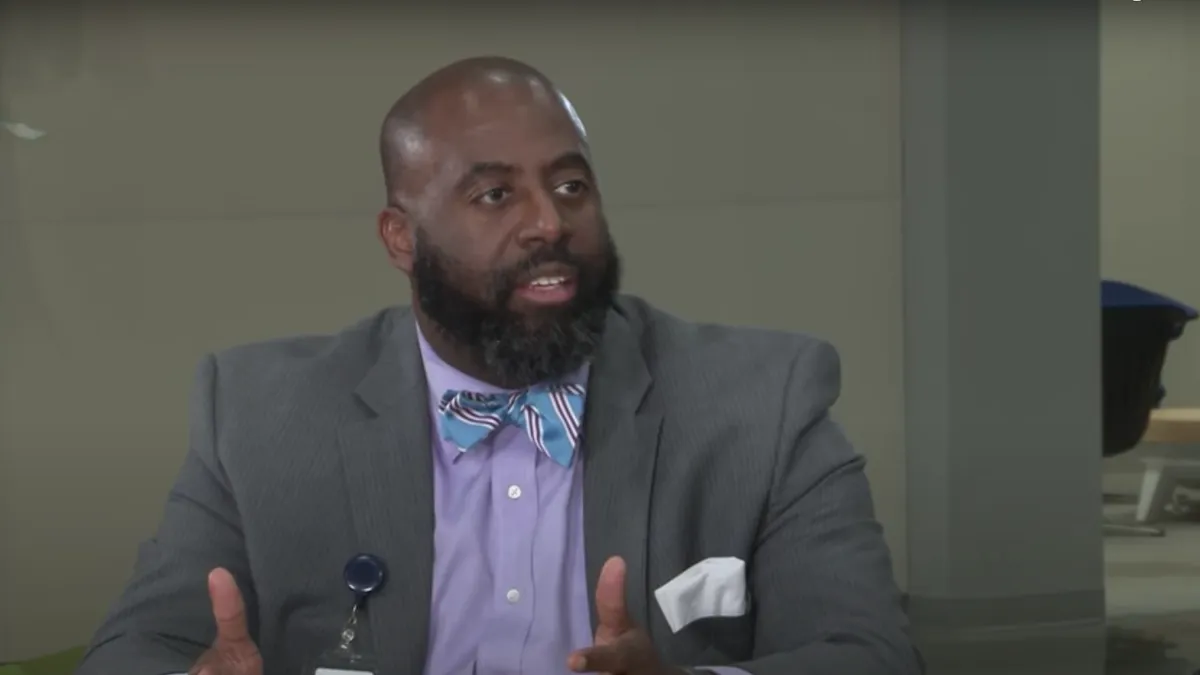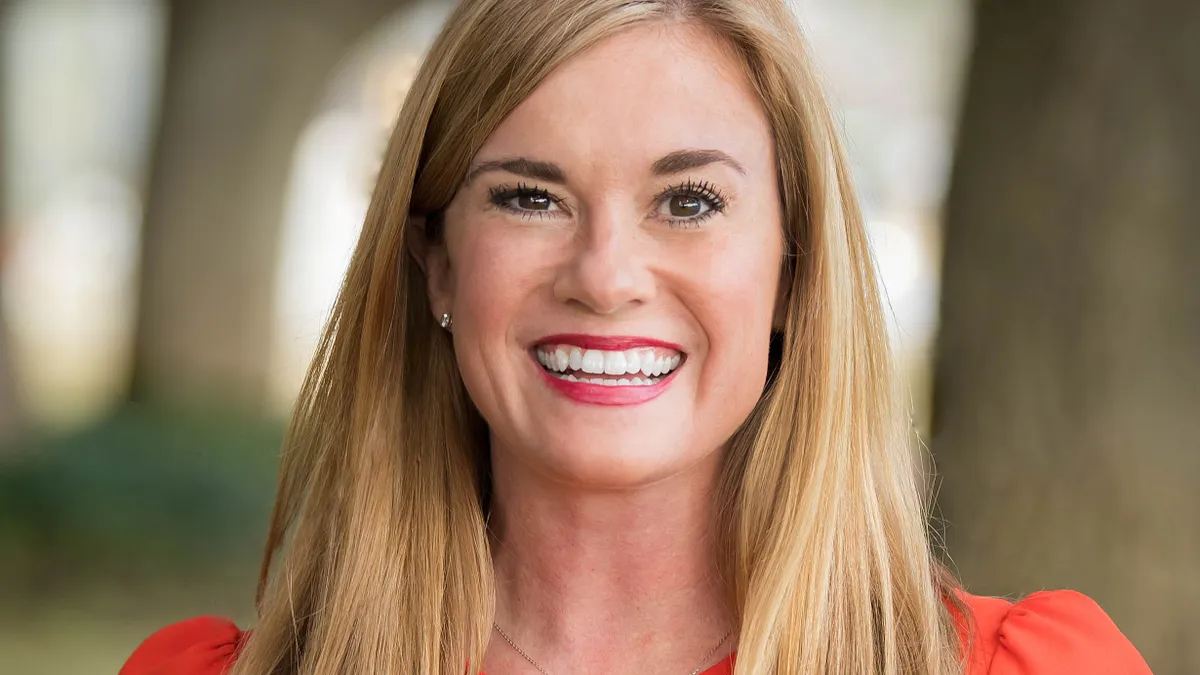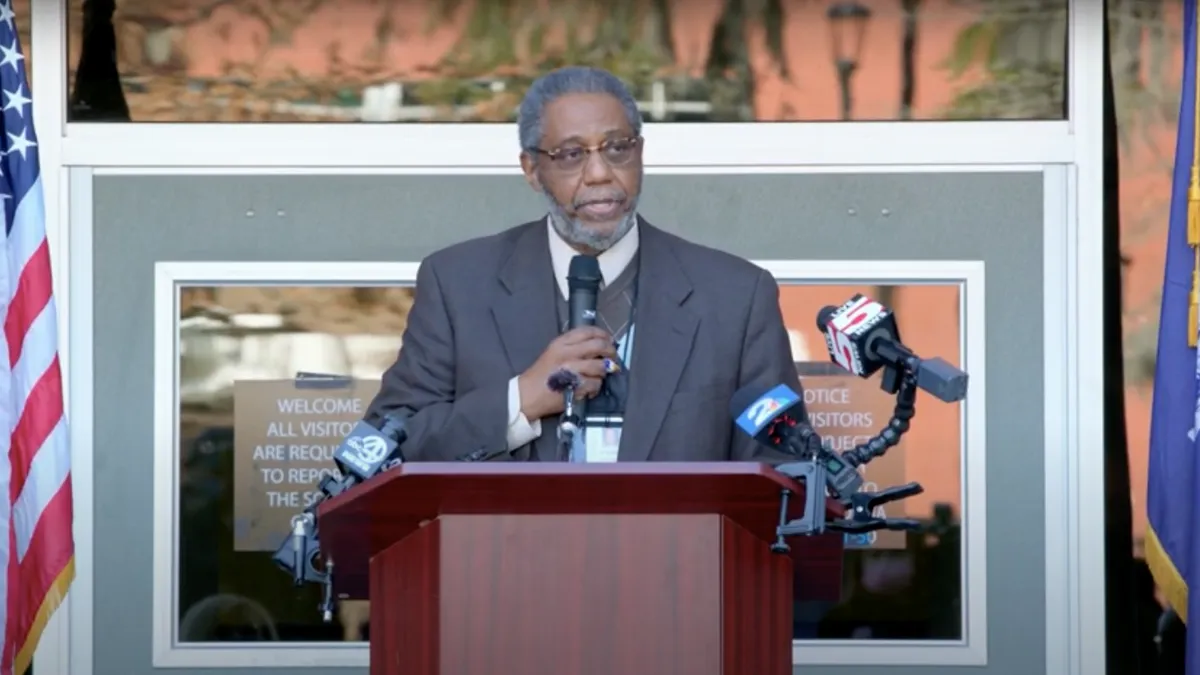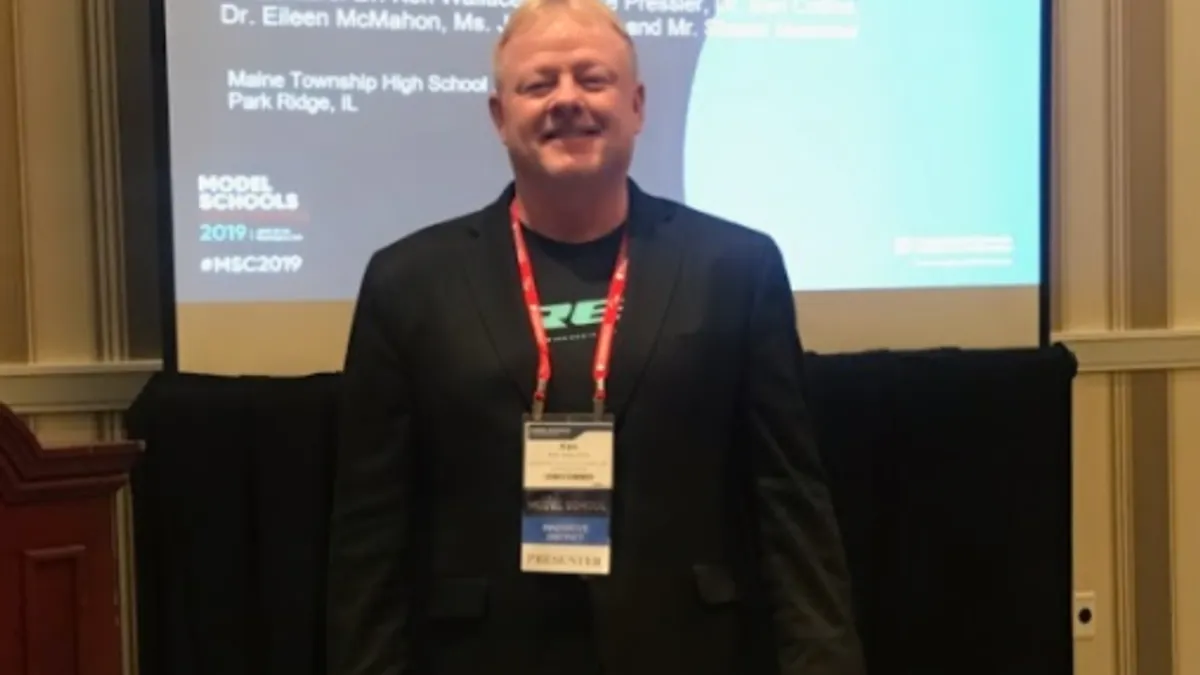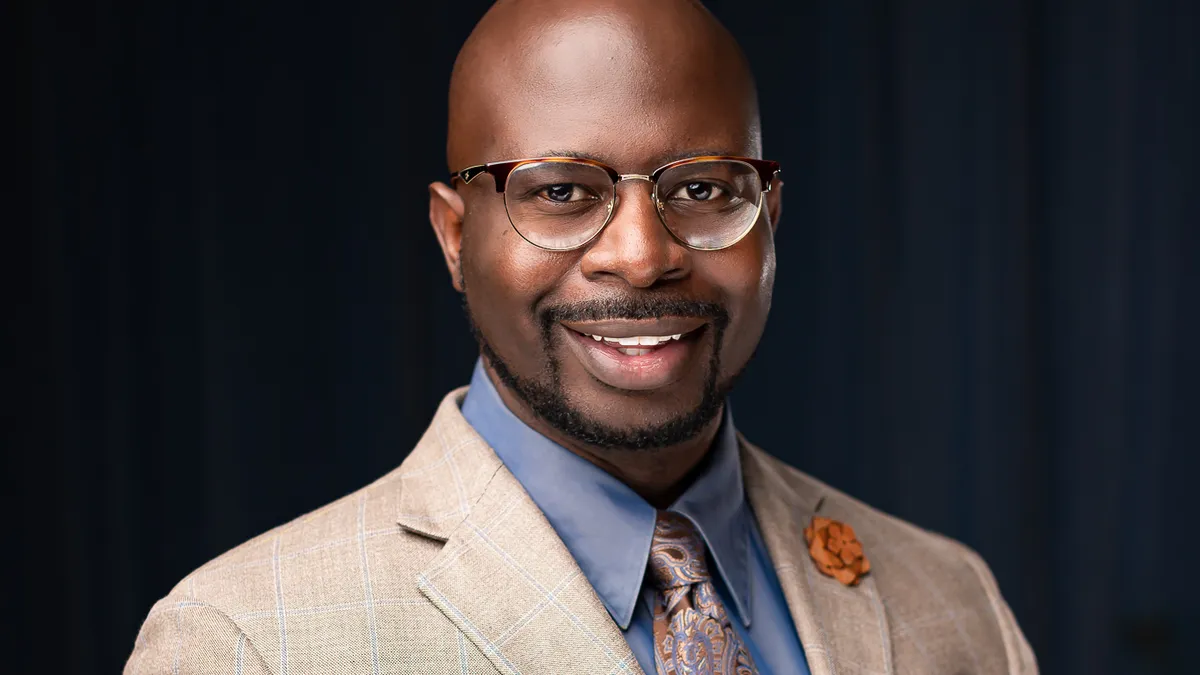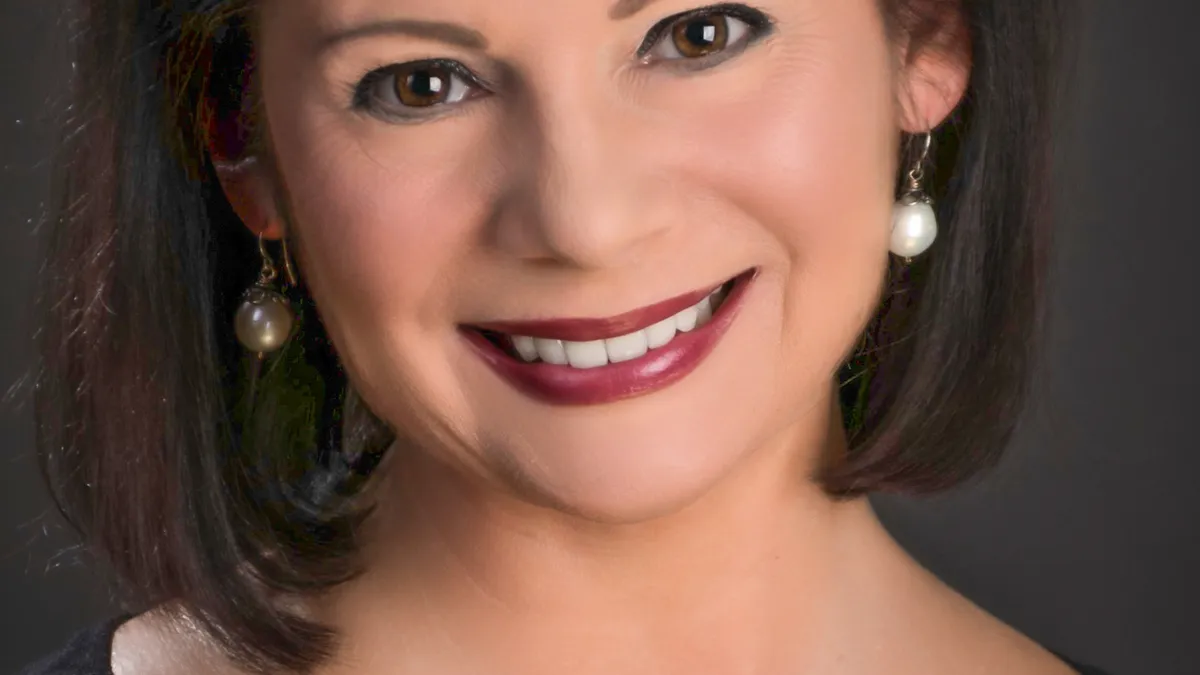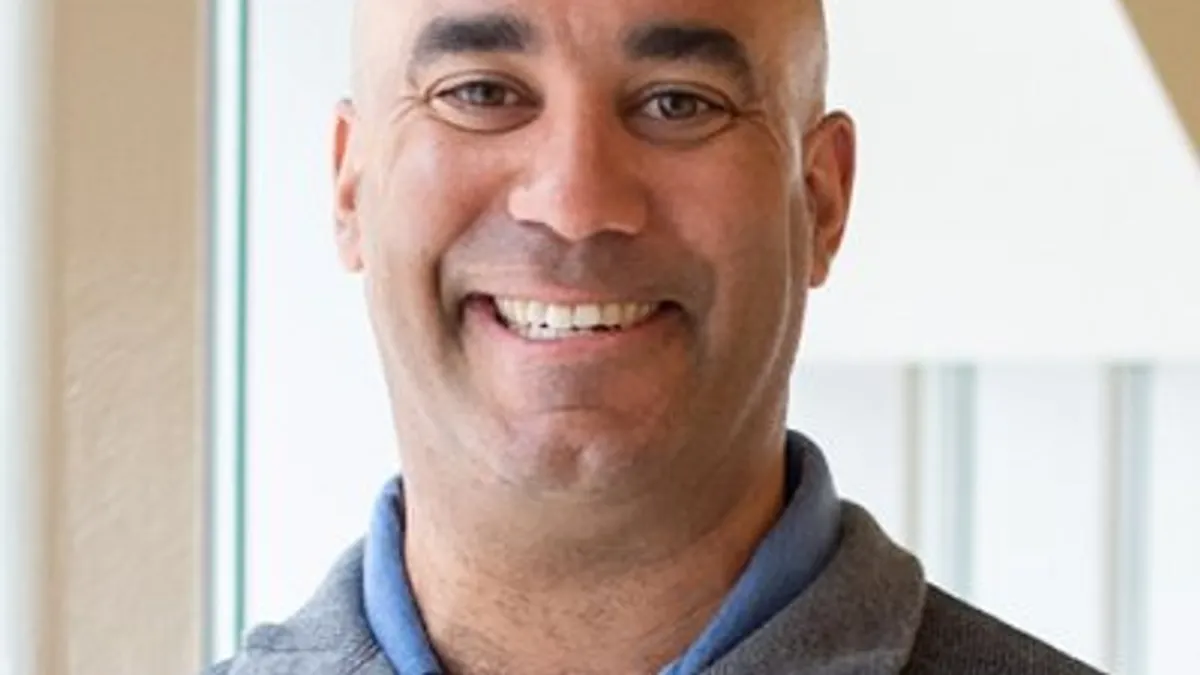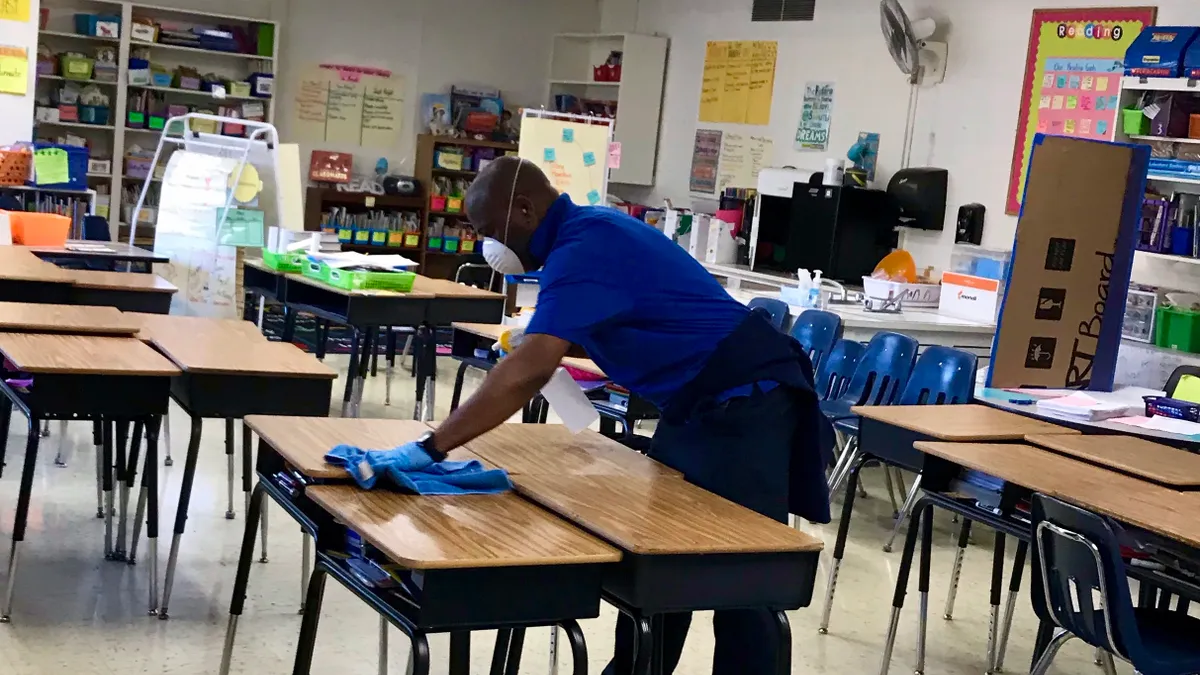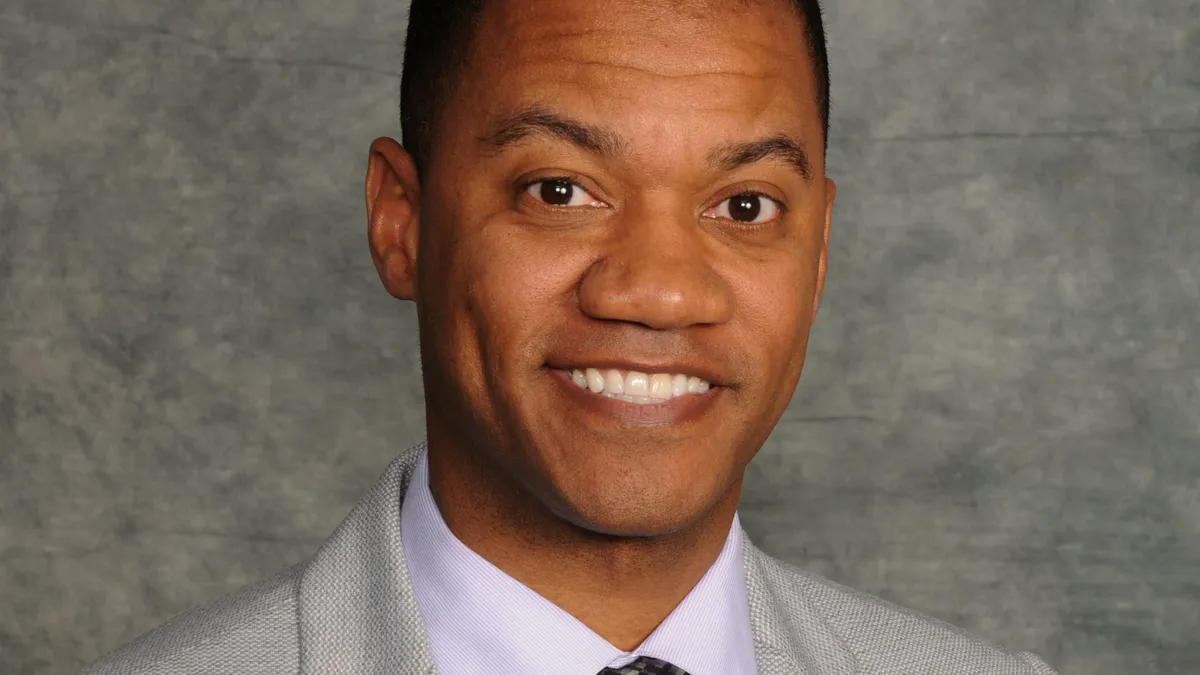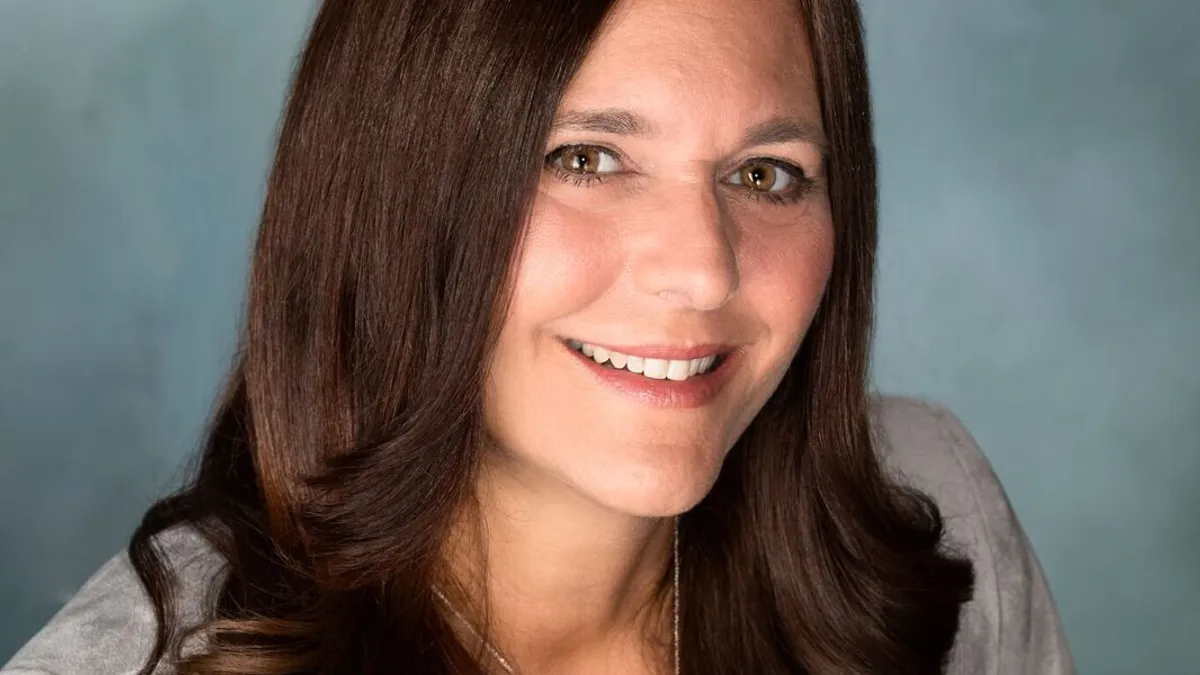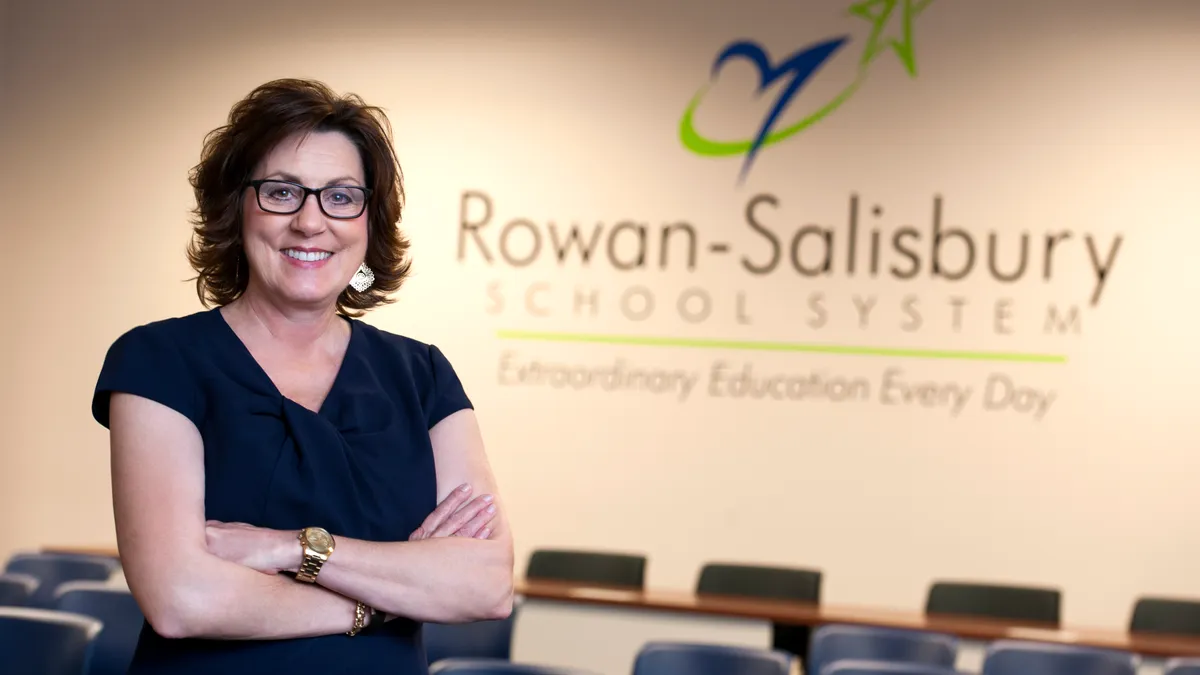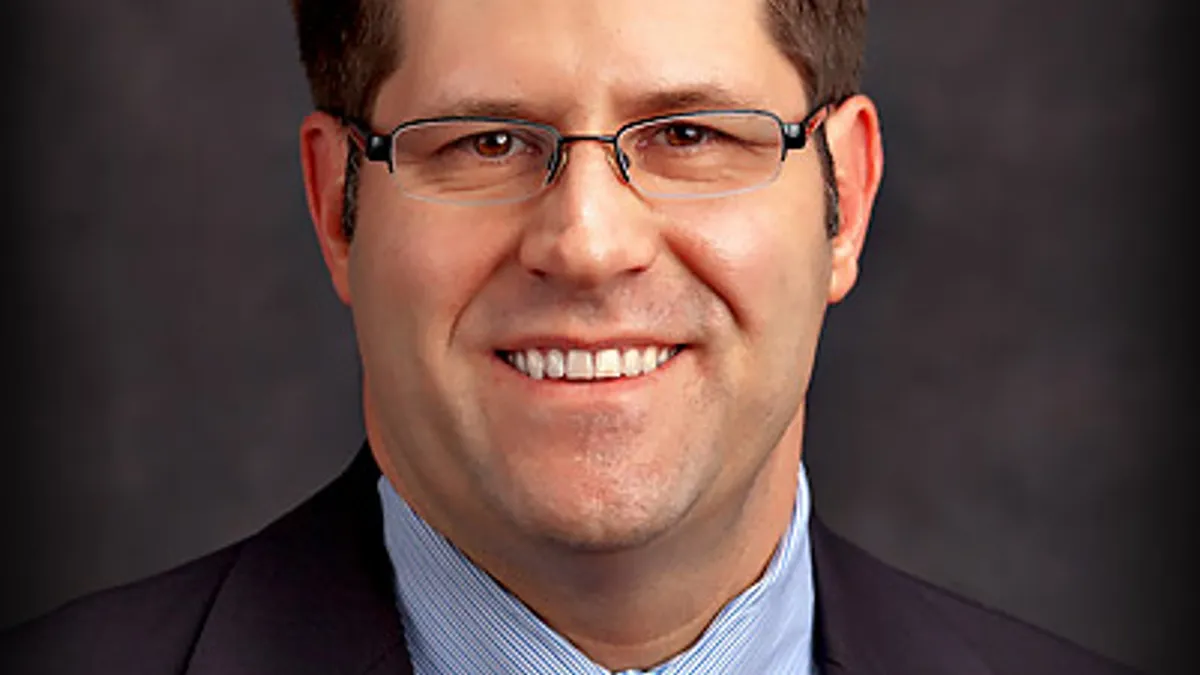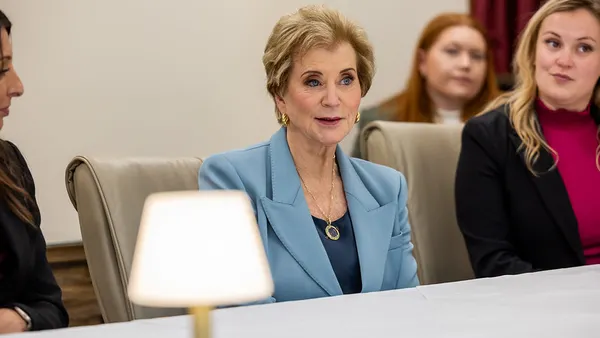Lessons In Leadership is an ongoing series in which K-12 principals and superintendents share their best practices as well as challenges overcome. For more installments, click here.
Indiana’s Eastern Hancock Schools prioritizes four promises in its strategic plan: joy, connection, growth and future success.
For Superintendent George Philhower, these pillars represent a commitment to creating an environment students and teachers want to be in every day, where everyone is seen, where growth is measured in meaningful ways alongside academics, and where proficiency is not the sole end goal.
“Our teachers have all the agency in terms of designing classroom experiences that move those four promises forward,” Philhower, who has led the nearly 1,200-student district for five years, told K-12 Dive. “So those four promises serve as our compass, but also as our filter for decision-making.”
We recently caught up with Philhower to learn more about how Eastern Hancock provides teacher autonomy and what kind of results the district has seen from those efforts thus far.
Editor’s Note: The following interview has been edited for brevity and clarity.
K-12 DIVE: What are some of the things that you do in Eastern Hancock schools to provide teacher agency?
GEORGE PHILHOWER: As our teachers are trying to make decisions in their classroom, if they're throwing things through the filter of joy, connection, growth and success, they have permission to do those things without having to ask. And if they cost money, we typically try to find ways — within reason — to make those things happen. We've done some work to define the learning outcomes we want our students to have, which helps us quantify a little bit better what success looks like in that growth promise. But within that, our teachers have the creative ability to pretty much open the door and do whatever they think needs to happen.
How have you seen that level of agency impact the outcomes in your school district, both in terms of teacher recruitment, retention and morale, and in terms of student engagement and outcomes?
PHILHOWER: Eastern Hancock has traditionally done very well on state assessments and those kinds of things. Teacher retention is pretty high.
It's a hard market in terms of finding teachers and retaining them even right now, which is why we think that the joy promise needs to be something we are very intentional about. But we continue to get a growing number of kids who come to us from neighboring districts. pPeople vote with their feet. It’s probably the biggest measure that we can take in terms of whether or not we're providing the type of education that kids deserve and families are looking for.
I think a lot of that has to do with the incredible teachers we have in our classrooms, who do awesome things for kids.
Are there any barriers or challenges you've experienced when it comes to providing that level of agency to teachers?
PHILHOWER: As a leader, you're always trying to walk the tight rope of support and high expectations and autonomy. I think that's the challenge of leadership — giving teachers enough flexibility and freedom to make sure they know that we trust them, but also not totally abandoning them so that they know that they're supported. And that's a tough tightrope to walk sometimes, so I'd say that's probably the biggest challenge.
I'm not 100% familiar with education policy on the state level in Indiana, but is it a state where experimentation and innovation are a little bit more encouraged in terms of the accountability side of things and what’s expected on that end?
PHILHOWER: In Indiana, we really want kids to get high marks in all the ways that they can be measured, but we also know that's not going to happen if we keep doing things the way that they've always been done.
In my mind, the best decision-makers for making those day-to-day decisions are the people who are closest to the work. So part of our job is to make sure our people feel supported and have the framework for decision-making, so they are equipped to make decisions because they're the ones closest to the work.
I know one of the barriers that comes up when innovation is discussed for a lot of districts is that they're always kind of walking that tightrope between trying new things and meeting accountability expectations, which can create the fear to experiment because of the potential consequences if it doesn’t work.
PHILHOWER: Along with empowering our teachers to have the flexibility to make decisions within their classroom, there comes some responsibility with that — in that we don't wait until the end of a really long experiment to see if something works.
Our teachers have the flexibility to make those decisions on a minute-by-minute, day-by-day basis as they're watching their kids and assessing them. I don't want anybody to think that anybody's running experiments that might not work. We don't have kids sitting in classrooms for a year and not learning because we tried something that might work.
But our teachers have the autonomy to be responsive and agile as they meet each kid's needs. From the outside in, it seems like a pretty simple job. But really causing learning in a classroom is really, really complicated, and every single kid learns in different ways.
We might be able to get good test scores by following a script, but we're not going to cause maximum learning by following a script.
When it comes to ensuring autonomy can be provided for teachers, are there any guardrails that you all put in place? For instance, in the case of new tech tools or learning models, ensuring tools and approaches are compliant with laws like FERPA [the Family Educational Rights and Privacy Act]?
PHILHOWER: We certainly have board policy that dictates some of those safety precautions with FERPA and those kinds of things, to make sure we're following all those guidelines. But in addition to that, we have key learning outcomes that are identified for every grade level and every single course. And we want to see student learning data relative to those things.
It’s not just, “Do whatever you want in your classroom.” It's, “You have the flexibility to do what you want to and to achieve these intended outcomes that we share.”


